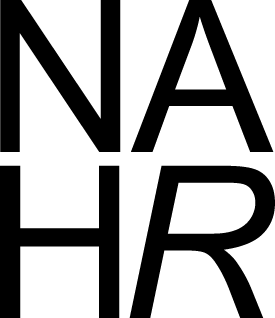Fellows /
Residenti

2021
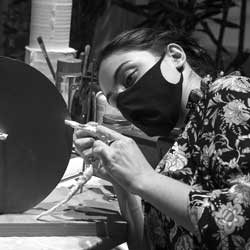
Camilla Alberti
Milano, Italy
Unbinding Creatures
Sculptural project that through research and collection of fragments of contemporary ruins (abandoned anthropic objects and organic elements) leads to the construction of "corporeal installations". Decentralised sculptures inspired by plant, hybrid in their being spaces and bodies at the same time.
Camilla Alberti has an MA in Visual Arts and Curatorial Studies from NABA. As a visual artist, she works on the ways in which the world is constantly constructed and inhabited, focusing on the relationships between the different living species and the space that surrounds them.
Milano, Italy
Unbinding Creatures
Sculptural project that through research and collection of fragments of contemporary ruins (abandoned anthropic objects and organic elements) leads to the construction of "corporeal installations". Decentralised sculptures inspired by plant, hybrid in their being spaces and bodies at the same time.
Camilla Alberti has an MA in Visual Arts and Curatorial Studies from NABA. As a visual artist, she works on the ways in which the world is constantly constructed and inhabited, focusing on the relationships between the different living species and the space that surrounds them.
Creature svincolanti
Progetto scultoreo che attraverso la ricerca e la raccolta di frammenti di rovine contemporanee (oggetti antropici abbandonati ed elementi organici) porta alla costruzione di "installazioni corporee". Sculture decentralizzate ispirate alla pianta, ibride nel loro essere spazi e corpi allo stesso tempo.
Camilla Alberti ha conseguito un Master in Arti Visive e Studi Curatoriali presso NABA. Come artista visiva, lavora sui modi in cui il mondo è costantemente costruito e abitato, concentrandosi sulle relazioni tra le diverse specie viventi e lo spazio che le circonda.

Orso Czerny
Carrara, Italy
The sound of listening
Multidisciplinary project about what it means to listen; how listening establishes deeper bonds of interconnectedness with self, other (sentient and non), place and time, as a profound form of communication. Interactive site specific work, sculptural object, drawing, sound, video, action.
Orso Czerny is a multidisciplinary Artist residing in Italy. “My practices are paddles with which I navigate - the compasses guiding me forth - revealing the ritual of creating that binds me to the deeper meanings of being alive and what it means to be human.”
Carrara, Italy
The sound of listening
Multidisciplinary project about what it means to listen; how listening establishes deeper bonds of interconnectedness with self, other (sentient and non), place and time, as a profound form of communication. Interactive site specific work, sculptural object, drawing, sound, video, action.
Orso Czerny is a multidisciplinary Artist residing in Italy. “My practices are paddles with which I navigate - the compasses guiding me forth - revealing the ritual of creating that binds me to the deeper meanings of being alive and what it means to be human.”
Il suono dell'ascolto Progetto multidisciplinare su cosa significa ascoltare; come l'ascolto stabilisca legami più profondi di interconnessione con il sé, l'altro (senziente e non), il luogo e il tempo, come forma profonda di comunicazione. Lavoro site specific interattivo, oggetto scultoreo, disegno, suono, video, azione.
Orso Czerny è un artista multidisciplinare residente in Italia. "Le mie pratiche sono le pagaie con le quali navigo - le bussole mi guidano in avanti - rivelando il rituale del creare che mi lega ai significati più profondi dell'essere vivo e cosa significa essere umano."

Meri Gorni
Paderno Dugnano, Italy
On leave
With NAHR I will draw the animals and plants around us. The drawings, together with reflections made while listening, seeing and feeling the life of the camp and everything that makes an impact on me, will then be collected in a single, original book which I will donate to NAHR.
Meri Gorni was born in Pegognaga, Mantua and lives in Paderno Dugnano, Italy.
She studied at the Università Statale in Milan and still haven't stopped examining the wonderful meanings of words.
Her works (videos, books, photographs, drawings, installations, performances) all have connotations to words.
Paderno Dugnano, Italy
On leave
With NAHR I will draw the animals and plants around us. The drawings, together with reflections made while listening, seeing and feeling the life of the camp and everything that makes an impact on me, will then be collected in a single, original book which I will donate to NAHR.
Meri Gorni was born in Pegognaga, Mantua and lives in Paderno Dugnano, Italy.
She studied at the Università Statale in Milan and still haven't stopped examining the wonderful meanings of words.
Her works (videos, books, photographs, drawings, installations, performances) all have connotations to words.
In ferie
Con NAHR disegnerò gli animali e le piante intorno a noi. I disegni, insieme alle riflessioni fatte ascoltando, vedendo e sentendo la vita del campo e tutto ciò che ha un impatto su di me, saranno poi raccolti in un unico libro originale che donerò a NAHR.
Meri Gorni è nata a Pegognaga, Mantova, vive a Paderno Dugnano, Italia, ha studiato all'Università Statale di Milano e non ha ancora smesso di esaminare i meravigliosi significati delle parole. Le sue opere (video, libri, fotografie, disegni, installazioni, performance) hanno tutte connotazioni alle parole.

Xinning Liu
London, UK
Quirrel Bureau
Quirrel Bureau is a short experimental animated film investigating the biodiversity of Val Taleggio, focussing specifically on human and animal coexistence. It will show a range of creatures, inspired by the local animals, and modified using surreal, zoomorphic artistic techniques.
Xinning Liu is an artist and animator, originally from China. She has completed a BA in Fine Art at China Academy of Art, an MA in Animation at University of the Arts London, and an MA in Film and Screen Studies at Goldsmiths, University of London.
London, UK
Quirrel Bureau
Quirrel Bureau is a short experimental animated film investigating the biodiversity of Val Taleggio, focussing specifically on human and animal coexistence. It will show a range of creatures, inspired by the local animals, and modified using surreal, zoomorphic artistic techniques.
Xinning Liu is an artist and animator, originally from China. She has completed a BA in Fine Art at China Academy of Art, an MA in Animation at University of the Arts London, and an MA in Film and Screen Studies at Goldsmiths, University of London.
Quirrel Bureau
Quirrel Bureau è un breve film d'animazione sperimentale che indaga sulla biodiversità della Val Taleggio, incentrato specificamente sulla convivenza umana e animale. Mostrerà una serie di creature, ispirate agli animali locali e modificate utilizzando tecniche artistiche surreali e zoomorfe.
Xinning Liu è un'artista e animatrice originaria della Cina. Ha conseguito una laurea in Belle Arti presso la China Academy of Art, un Master in Animazione presso la University of the Arts London e un Master in Film and Screen Studies presso Goldsmiths, University of London.

Francesco Maluta
Milano, Italy
Back Home
The project is generated from reflections born by the repopulation of some mammals in Val Taleggio in relation to a study carried out in the state of New York after the spread of Covid which shows that half of New Yorkers have moved to rural areas. During the residency I’ll produce drawings and paintings.
Francesco Maluta was born in Lovere and lives and works in Milan. In 2013 he graduated from the Academy of Fine Arts in Venice, Painting department. He has exhibited in solo shows including Battaglia Artistic Foundry in Milan, TRA TrevisoRicercaArte, and the Botanical Garden in Siena.
Milano, Italy
Back Home
The project is generated from reflections born by the repopulation of some mammals in Val Taleggio in relation to a study carried out in the state of New York after the spread of Covid which shows that half of New Yorkers have moved to rural areas. During the residency I’ll produce drawings and paintings.
Francesco Maluta was born in Lovere and lives and works in Milan. In 2013 he graduated from the Academy of Fine Arts in Venice, Painting department. He has exhibited in solo shows including Battaglia Artistic Foundry in Milan, TRA TrevisoRicercaArte, and the Botanical Garden in Siena.
Tornare a casa
Il progetto nasce dalle riflessioni nate dal ripopolamento di alcuni mammiferi in Val Taleggio in relazione a uno studio realizzato nello stato di New York dopo la diffusione del Covid da cui risulta che la metà dei newyorkesi si è trasferita in zone rurali. Durante la residenza produrrò disegni e dipinti.
Francesco Maluta è nato a Lovere, vive e lavora a Milano. Nel 2013 si è diplomato all'Accademia di Belle Arti di Venezia, dipartimento di Pittura. Ha esposto in mostre personali tra cui Battaglia Artistico Fonderia a Milano, TRA TrevisoRicercaArte e Orto Botanico a Siena.
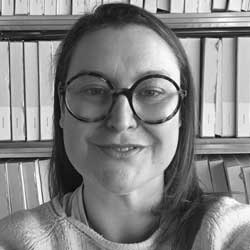
Vera Pravda
Milano, Italy
TE TA SET ME (YOU ARE ME)
‘Te ta set me’ means 'you are me’ and it is a relational project to increase the tangibility of the concept of interdependence between species. It will involve humans and other species of Val Taleggio, generating printed images, ’information sheets’, a printed banner and medium size mirror.
Vera Pravda confronts aspects of human impact on the environment crystallising visive reflections through the means of decontextualisation and appropriation of languages from other fields such as marketing or economics. Cooperation is her favourite modus operandi.
Milano, Italy
TE TA SET ME (YOU ARE ME)
‘Te ta set me’ means 'you are me’ and it is a relational project to increase the tangibility of the concept of interdependence between species. It will involve humans and other species of Val Taleggio, generating printed images, ’information sheets’, a printed banner and medium size mirror.
Vera Pravda confronts aspects of human impact on the environment crystallising visive reflections through the means of decontextualisation and appropriation of languages from other fields such as marketing or economics. Cooperation is her favourite modus operandi.
TE TA SET ME (TU SEI ME)
‘Te ta set me’ significa "tu sei me" ed è un progetto relazionale per aumentare la tangibilità del concetto di interdipendenza tra le specie. Coinvolgerà l'uomo e le altre specie della Val Taleggio, generando immagini stampate, "schede informative", uno striscione stampato e uno specchio di medie dimensioni.
Vera Pravda affronta aspetti dell'impatto umano sull'ambiente cristallizzando riflessioni visibili attraverso i mezzi della decontestualizzazione e appropriazione di linguaggi da altri campi come il marketing o l'economia. La cooperazione è il suo modus operandi preferito.
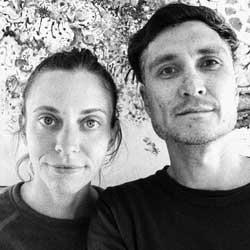
Marta Romani and Karl Logge
Italy
A weird entanglement
The project operates as an alchemic investigation of the natural landscape, local communities and our animal kin to weave a set of speculative portraits, performative actions and totemic artifacts as a weird entanglement — a custodial responsibility to care for what is fragile by carrying it close to our heart.
Marta Romani and Karl Logge create hybrid projects that combine critical contemporary art practices with the repetitive gestures and ancient techniques of weaving. Influenced by places, cycles and seasons and closely connected to nature their works take the form of nomadic spaces, children's workshops, site-specific tapestries, community engagement, live-art events and immersive installations.
Italy
A weird entanglement
The project operates as an alchemic investigation of the natural landscape, local communities and our animal kin to weave a set of speculative portraits, performative actions and totemic artifacts as a weird entanglement — a custodial responsibility to care for what is fragile by carrying it close to our heart.
Marta Romani and Karl Logge create hybrid projects that combine critical contemporary art practices with the repetitive gestures and ancient techniques of weaving. Influenced by places, cycles and seasons and closely connected to nature their works take the form of nomadic spaces, children's workshops, site-specific tapestries, community engagement, live-art events and immersive installations.
Uno strano intreccio
Il progetto opera come indagine alchemica del paesaggio naturale, comunità locali e animali del territorio per realizzare una serie di ritratti speculativi, azioni performative e artefatti totemici. Questo particolare intreccio incoraggia una responsabilità di custodia nel prendersi cura di ciò che è fragile, portandolo vicino al cuore.
La pratica condivisa di Karl Logge e Marta Romani è influenzata dal tempo profondo di luoghi, cicli e stagioni ed è strettamente connessa a natura, territorio e memoria culturale per realizzare opere ibride che uniscono le pratiche artistiche contemporanee a gesti ripetitivi e tecniche antiche di tessitura, filatura e tintura per affrontare temi di crisi, adattamento e interconnessione. Questi lavori assumono la forma di spazi nomadici, laboratori per bambini, tessiture site-specific, social art, eventi live ed installazioni.
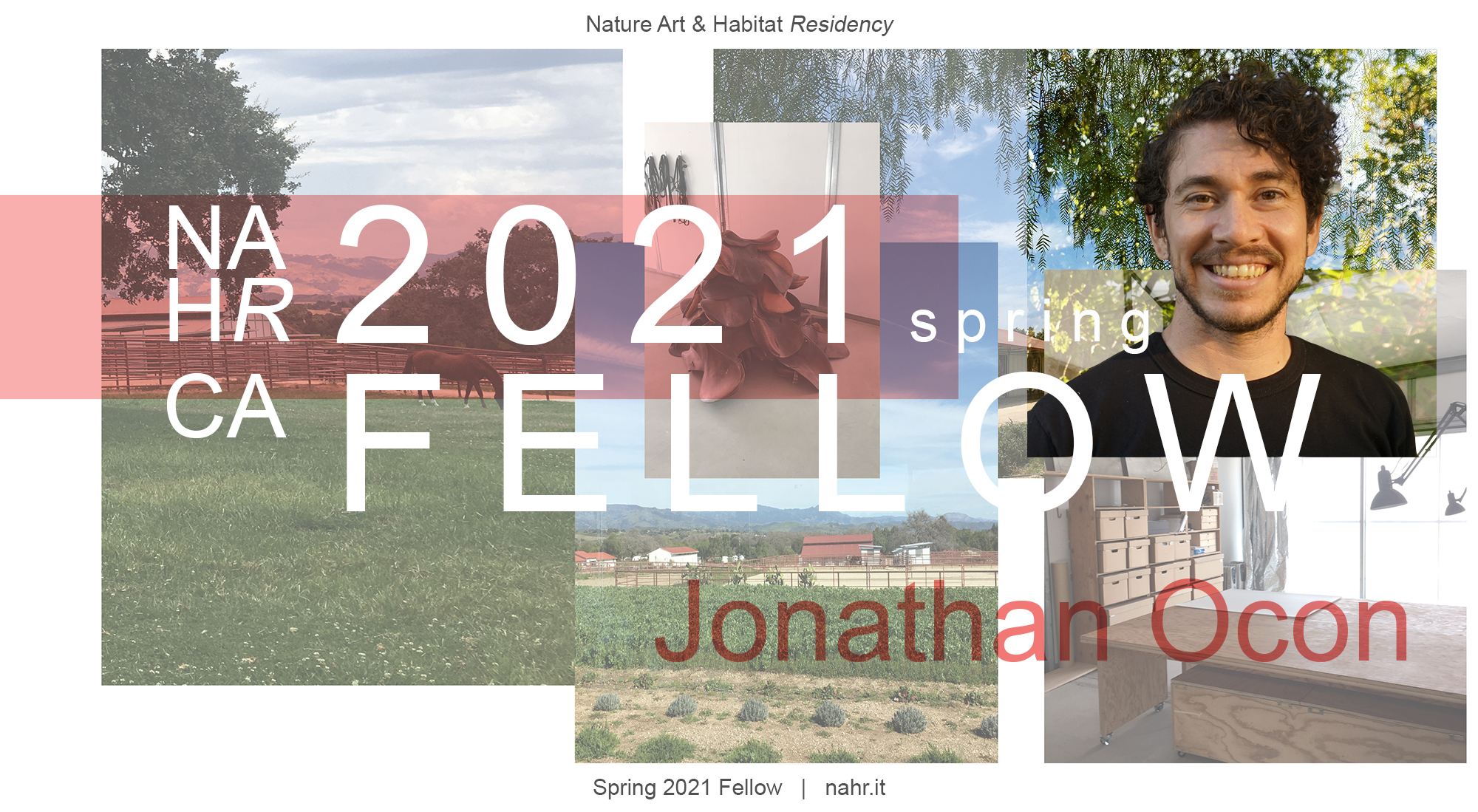
Jonathan Ocón
USA
Picking Up Traces: Assessing Animal Response to Socio-Morphologies
This research article will trace (non)human ecological relationships across the Santa Ynez Valley. The means of production involve remote sensing and in situ observations of local species to interpret their response to socio-morphologies spanning the previous twenty years.
Jonathan Ocón is pursuing a PhD in Geography at UCLA where he specializes in remote sensing of the environment and engages students in best practices in geospatial analysis.
USA
Picking Up Traces: Assessing Animal Response to Socio-Morphologies
This research article will trace (non)human ecological relationships across the Santa Ynez Valley. The means of production involve remote sensing and in situ observations of local species to interpret their response to socio-morphologies spanning the previous twenty years.
Jonathan Ocón is pursuing a PhD in Geography at UCLA where he specializes in remote sensing of the environment and engages students in best practices in geospatial analysis.

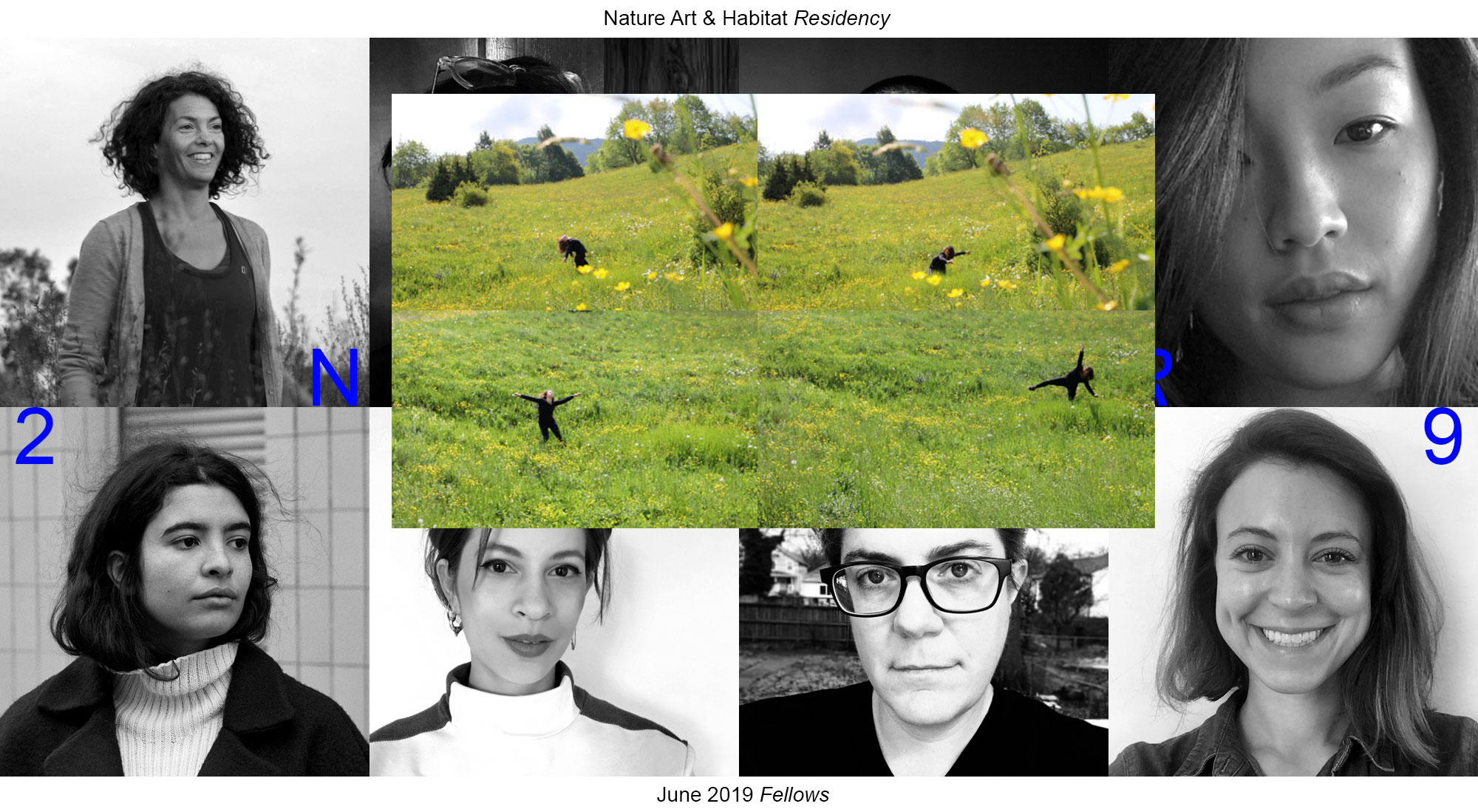
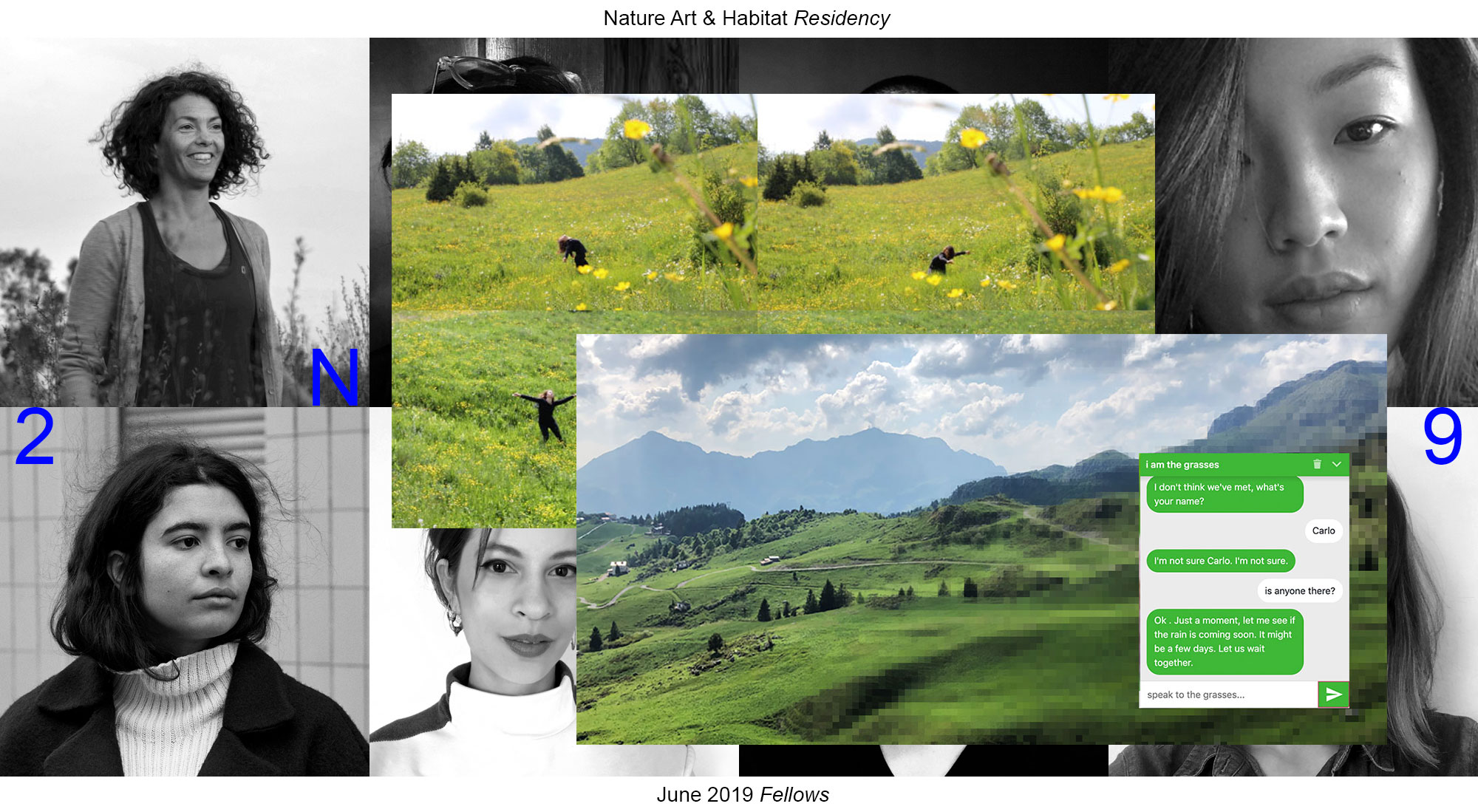

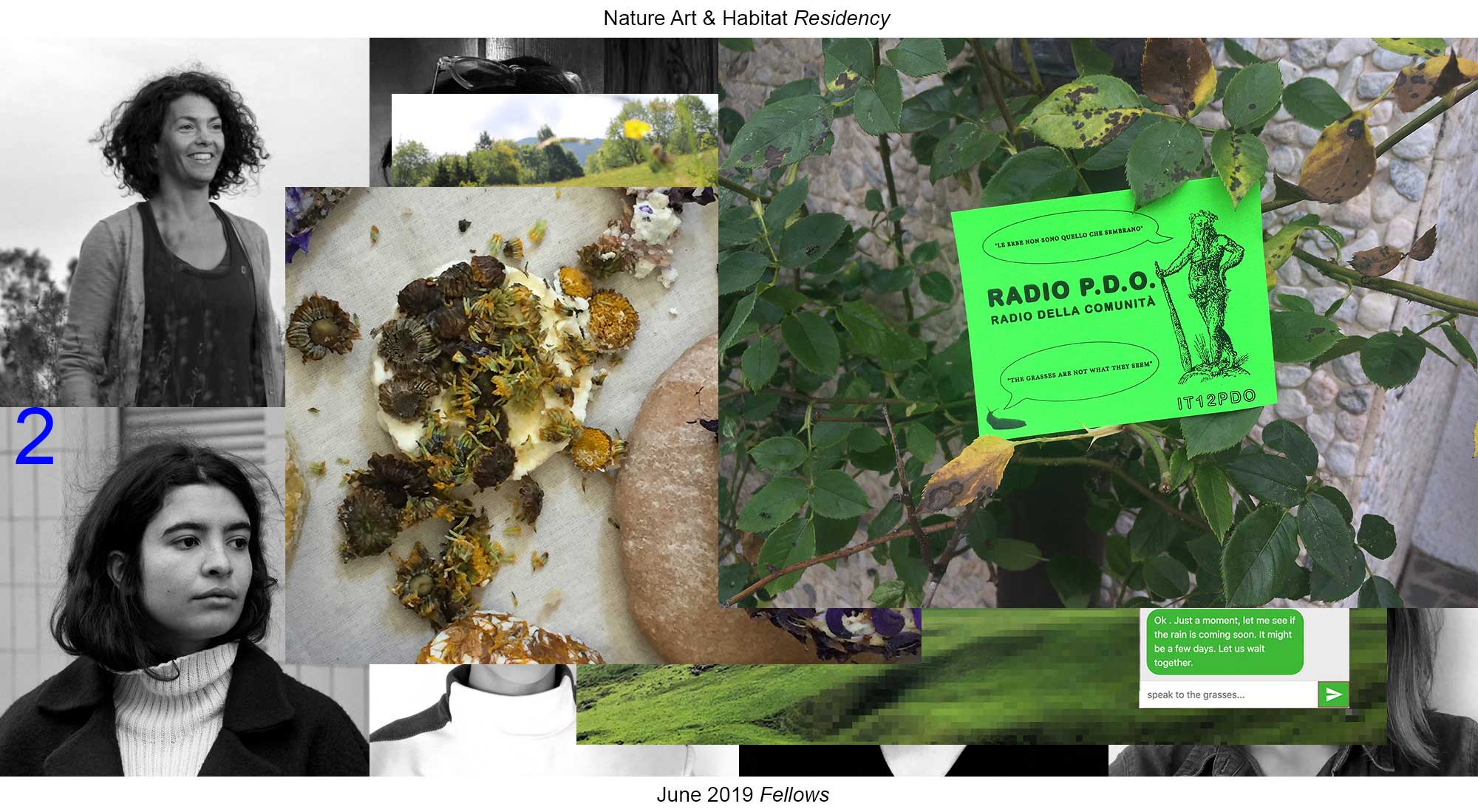


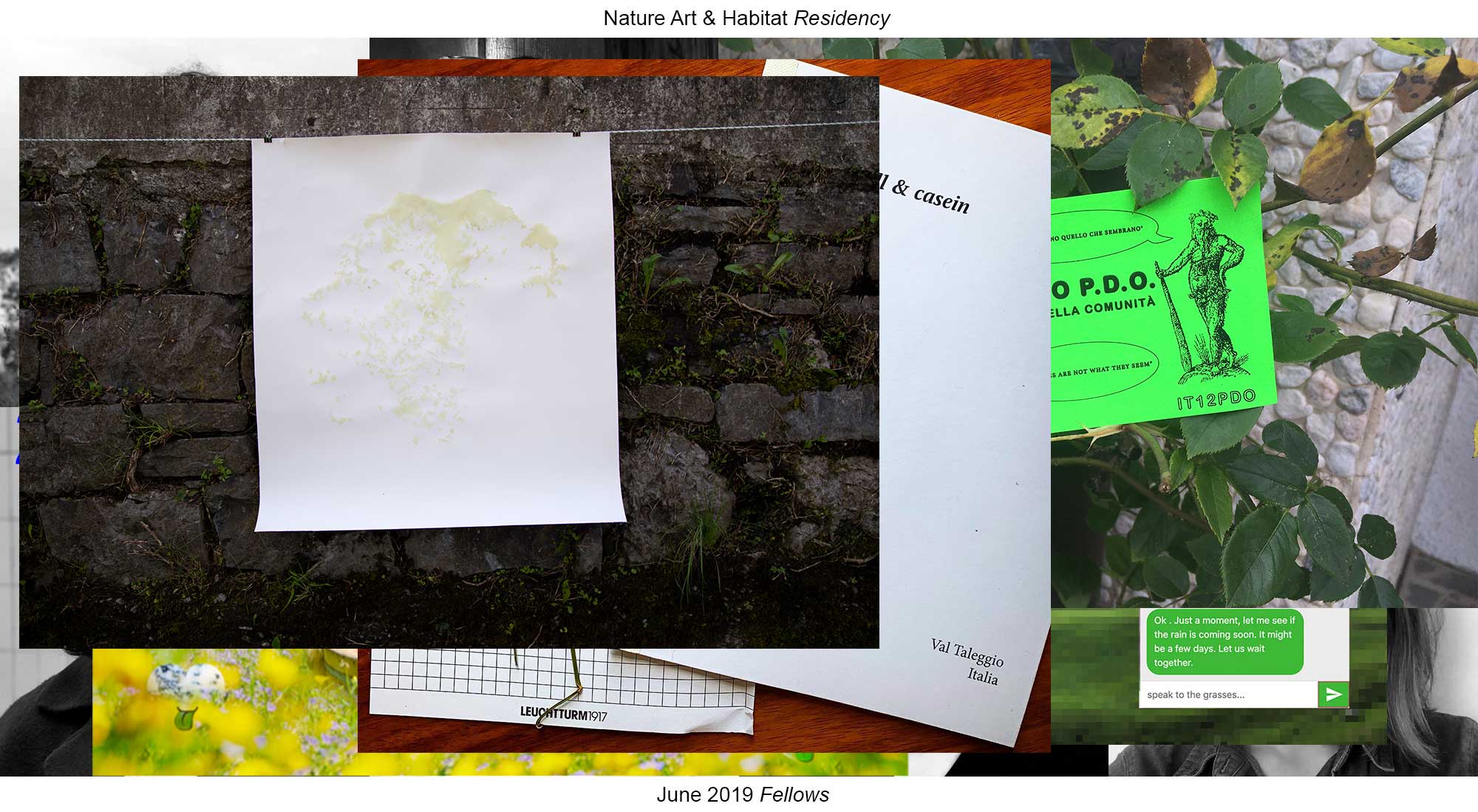

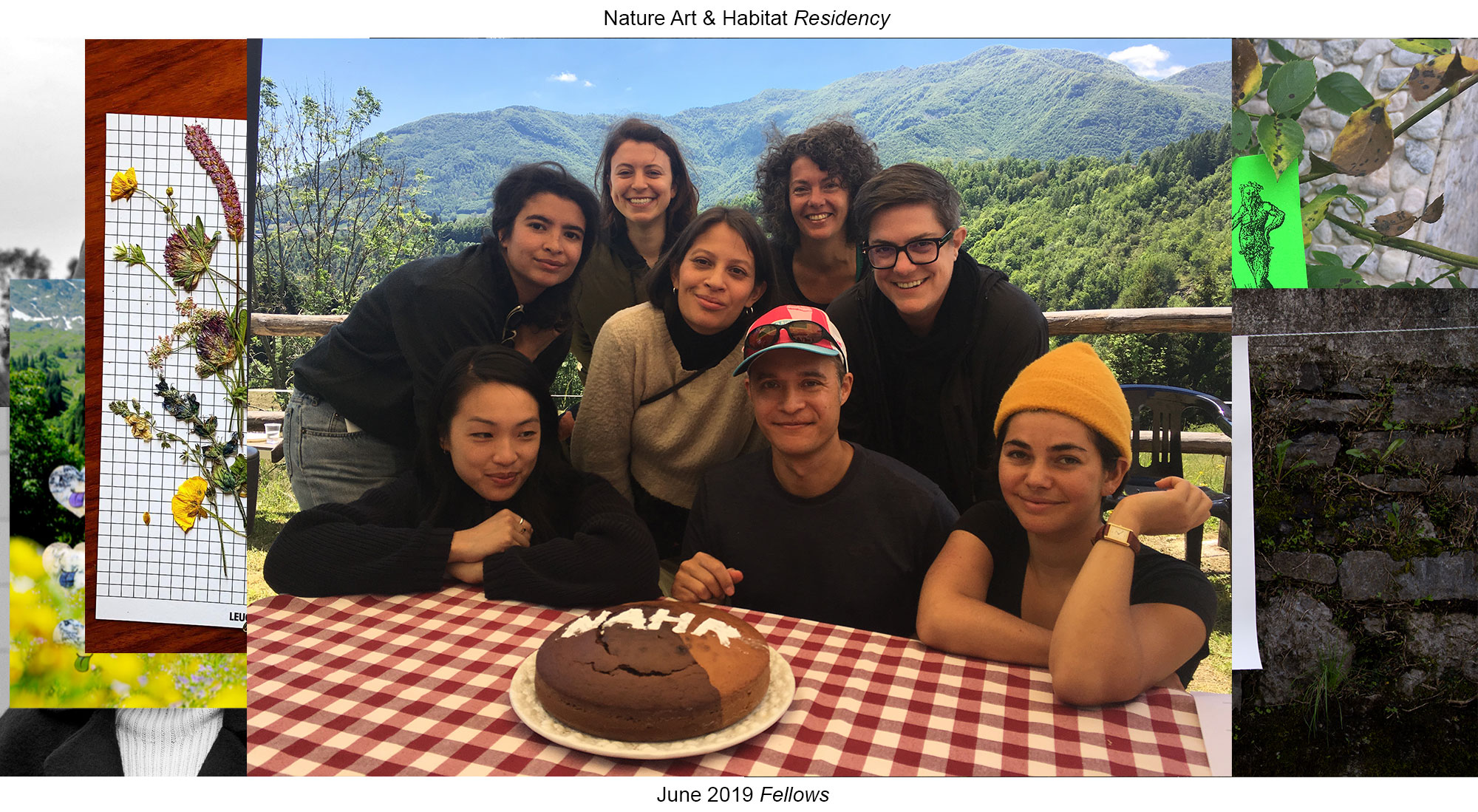

Katie De Bari
USA
Casonsèi: Arte Pastorale della Regione Alpina. CAPRA
How can I physically respond to the cheese economy in Val Taleggio? In dancing the making of Casonsèi, the first meal I had in Sottochiesa (made by Luisa), I celebrate a dish of iterations in name and filling, made with locally gathered ingredients, which also contribute to the cheese chain. By wearing a red nose, I also explore the evolving character of the Arlecchino mask. By dancing at different altitudes, I speculate about the future of species impacted by climate change. By dancing across different mountains, I nod to future changes in what is rooted where. Dancing the recipe straight is acknowledging the linear. Dancing the recipe in retrograde, restructured, and resequenced, allows for mystery, ambiguity, and the portrayal of the non-linear. All that aside...where are the goats?
Katie De Bari is a performing artist and choreographer. Katie uses theater and dance to research new ways of acknowledging the nonhuman. As choreographer Annie B Parson says, “All structures can be choreographic forms,” and Katie is excited to experiment with embodying the landscape and partnering with other species. Katie’s recent performance work, as part of various collectives based in New York City, has been shown at Frederick Loewe Theater, Downtown Playwrights, and Hudson Guild Theater. She received her BFA in Drama (Experimental Theater) from New York University.
USA
Casonsèi: Arte Pastorale della Regione Alpina. CAPRA
How can I physically respond to the cheese economy in Val Taleggio? In dancing the making of Casonsèi, the first meal I had in Sottochiesa (made by Luisa), I celebrate a dish of iterations in name and filling, made with locally gathered ingredients, which also contribute to the cheese chain. By wearing a red nose, I also explore the evolving character of the Arlecchino mask. By dancing at different altitudes, I speculate about the future of species impacted by climate change. By dancing across different mountains, I nod to future changes in what is rooted where. Dancing the recipe straight is acknowledging the linear. Dancing the recipe in retrograde, restructured, and resequenced, allows for mystery, ambiguity, and the portrayal of the non-linear. All that aside...where are the goats?
Katie De Bari is a performing artist and choreographer. Katie uses theater and dance to research new ways of acknowledging the nonhuman. As choreographer Annie B Parson says, “All structures can be choreographic forms,” and Katie is excited to experiment with embodying the landscape and partnering with other species. Katie’s recent performance work, as part of various collectives based in New York City, has been shown at Frederick Loewe Theater, Downtown Playwrights, and Hudson Guild Theater. She received her BFA in Drama (Experimental Theater) from New York University.
Casonsèi: Arte Pastorale della Regione Alpina. CAPRA
Come posso rispondere fisicamente all'economia del formaggio in Val Taleggio? Nel ballare la realizzazione di Casonsèi, il primo pasto che ho fatto a Sottochiesa (prodotto da Luisa), celebro un piatto di iterazioni nel nome e nel ripieno, realizzato con ingredienti raccolti localmente, che contribuiscono anche alla catena del formaggio. Indossando un naso rosso, esploro anche l’evoluzione della maschera Arlecchino. Ballando a diverse altitudini, ipotizzo il futuro delle specie colpite dai cambiamenti climatici. Danzando in montagne diverse, annuisco ai cambiamenti ed a ciò che è radicato e dove. Ballare la ricetta in modo diretto è riconoscere la linearità. Ballare la ricetta in modo retrogrado, ristrutturato e ri-sequenziato, consente il mistero, l'ambiguità e la rappresentazione del non lineare. A parte tutto... dove sono le capre?
Katie De Bari è una performing artistf e coreografa. usa il teatro e la danza per cercare nuovi modi di riconoscere il non umano. Come dice la coreografa Annie B Parson, "Tutte le strutture possono essere forme coreografiche" e Katie è entusiasta di sperimentare l'incarnazione del paesaggio e la collaborazione con altre specie. Il recente lavoro di Katie, come parte di vari collettivi presenti a New York City, è stato mostrato al Frederick Loewe Theatre, Downtown Playwrights e Hudson Guild Theatre. Ha ricevuto il suo BFA in Drama (Experimental Theatre) dalla New York University.
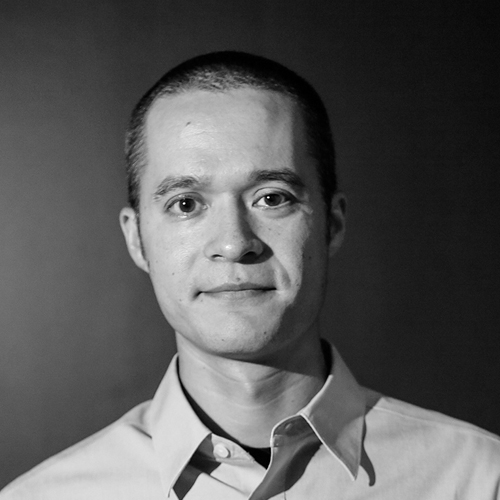
David Chan
Los Angeles, USA
Ground Truth: Grasses and Pastures of Val Taleggio
Ground Truth is an invitation to interface with the Val Taleggio region through an anthropomorphized version of its grasses and pastures. The identity of the valley has been informed through personal documentation of extensive trekking throughout the region. This immersive experiential process of travelling between pastures is a fictional embodiment of transhumance. The primary outcome of this project is a web based interactive design fiction in the form of a conversational bot. To build this interface, findings were processed and programmed into the natural language understanding artificial intelligence of IBM Watson. This bio-inspired digital story is further supported by a website hosting images, video, and GPS mapping of the field research.
David Chan is a creative technologist based in Los Angeles, CA whose work combines design research, emerging technologies, and storytelling. His curiosity has led to critical design prototypes through systems thinking, with a focus on sustainability and digital identities. David continues to explore and create as an MFA candidate in the Media Design Practices program at ArtCenter College of Design.
Los Angeles, USA
Ground Truth: Grasses and Pastures of Val Taleggio
Ground Truth is an invitation to interface with the Val Taleggio region through an anthropomorphized version of its grasses and pastures. The identity of the valley has been informed through personal documentation of extensive trekking throughout the region. This immersive experiential process of travelling between pastures is a fictional embodiment of transhumance. The primary outcome of this project is a web based interactive design fiction in the form of a conversational bot. To build this interface, findings were processed and programmed into the natural language understanding artificial intelligence of IBM Watson. This bio-inspired digital story is further supported by a website hosting images, video, and GPS mapping of the field research.
David Chan is a creative technologist based in Los Angeles, CA whose work combines design research, emerging technologies, and storytelling. His curiosity has led to critical design prototypes through systems thinking, with a focus on sustainability and digital identities. David continues to explore and create as an MFA candidate in the Media Design Practices program at ArtCenter College of Design.
Realtà di base: Erbe e pascoli della Val Taleggio
Realtà di base è un invito ad interfacciarsi con la Val Taleggio attraverso una versione antropomorfizzata delle sue erbe e dei suoi pascoli. L'identità della valle è stata studiata attraverso lunghe camminate in tutta la regione, che hanno portato ad acquisire competenze personali. Questo viaggio tra i pascoli è un processo esperienziale immersivo, un'incarnazione fittizia della transumanza. Il progetto è una fiction di design interattivo su piattaforma web, sotto forma di bot di conversazione. L’ interfaccia e’ stato construita usando IBM Watson, sistema di Intelligenza Artificiale che elabora i dati, analizza i contenuti, e permette la visualizzazione dei risultati. Questa narrazione digitale bio-ispirata è ulteriormente supportata da un sito Web che ospita immagini, video e mappe GPS della ricerca fatta sul territorio.
David Chan è un tecnologo creativo che vive a Los Angeles, in California, il cui lavoro combina ricerche di design, tecnologie emergenti e storytelling. La sua curiosità lo ha portato a creare prototipi di design critici attraverso il pensiero sistemico, con particolare attenzione alla sostenibilità e alle identità digitali. David continua ad esplorare e fare ricerca, e completerà l’ MFA in Media Design Practices presso l'ArtCenter College of Design nel 2020.

Anais Hazo
Berlin, Germany
Always the world - Interconnectedness through hands and genuine food
The project is embedded in milk culture(s), diversity, flora, and simple human action. I am collecting milk from the valley, and turning it into cheese, directly in my studio, with the help of various ancient milk cultures. Those cheeses are infused with the flora of the region: all of them contain flowers and vegetal extracts collected in the Val Taleggio. Along with some home-cultured bread, those edible artifacts will be displayed as a performative installation, tasted and shared with the community, during the open studio day. So the milk, the flowers and the bacteria can infuse within the people of this land. The work also includes a wide documentation of the processes, mainly in the shape of photographs and texts. This documentation will be turned into an artist publication. The publication aims to explain the various dimensions of the work to the public, and to remain in the valley as an open archive - the public will be invited to grow and enrich it according to their will.
Anaïs Hazo is a French trans-disciplinary artist and researcher, working at the intersection of art, environmentalism and design. She is mainly interested in ways of living, food, taste, images, design, nature, anthropology, language and philosophy. Her practices include food making and studies, photography, poetry and publishing. She is based in Berlin
Berlin, Germany
Always the world - Interconnectedness through hands and genuine food
The project is embedded in milk culture(s), diversity, flora, and simple human action. I am collecting milk from the valley, and turning it into cheese, directly in my studio, with the help of various ancient milk cultures. Those cheeses are infused with the flora of the region: all of them contain flowers and vegetal extracts collected in the Val Taleggio. Along with some home-cultured bread, those edible artifacts will be displayed as a performative installation, tasted and shared with the community, during the open studio day. So the milk, the flowers and the bacteria can infuse within the people of this land. The work also includes a wide documentation of the processes, mainly in the shape of photographs and texts. This documentation will be turned into an artist publication. The publication aims to explain the various dimensions of the work to the public, and to remain in the valley as an open archive - the public will be invited to grow and enrich it according to their will.
Anaïs Hazo is a French trans-disciplinary artist and researcher, working at the intersection of art, environmentalism and design. She is mainly interested in ways of living, food, taste, images, design, nature, anthropology, language and philosophy. Her practices include food making and studies, photography, poetry and publishing. She is based in Berlin
Sempre il mondo - Interconnessione attraverso le mani e il cibo genuino
Il progetto è profodamente inserito nella cultura(e) del latte, nella biodiversità, nella flora e nella semplice azione umana. Raccolgo il latte prodotto nella Valle e lo trasformo in formaggio, direttamente nel mio studio, utilizzando antiche competenze di produzione casearia. Questi formaggi si fondono con la flora della regione: tutti contengono fiori ed estratti vegetali raccolti in Val Taleggio. Insieme a del pane fatto in casa, questi prodotti commestibili, realizzati artigianalmente, verranno presentati come un'installazione artistica, degustati e condivisi con la comunità, durante la giornata di Open studio. Quindi il latte, i fiori e i batteri possono fondersi con le persone che popolano questa terra. Il lavoro comprende anche un'ampia documentazione dei processi produttivi, principalmente sotto forma di fotografie e testi, che sarà successivamente trasformata in una pubblicazione artistica. La pubblicazione si propone di spiegare i vari aspetti del lavoro al pubblico e di rimanere nella Valle come un archivio attivo: la popolazione e i visitatori saranno invitati ad accrescerla e ad arricchirla secondo la loro volontà.
Anaïs Hazo è un'artista e ricercatrice trans-diciplinare francese che lavora tra arte, ambientalismo e design. Si interessa principalmente ai modi di vivere, al cibo, al gusto, alle immagini, al design, alla natura, all'antropologia, alla lingua e alla filosofia. Il suo lavoro include lo studio e la produzione di cibo, la fotografia, la poesia e l'editoria. Vive a Berlino.
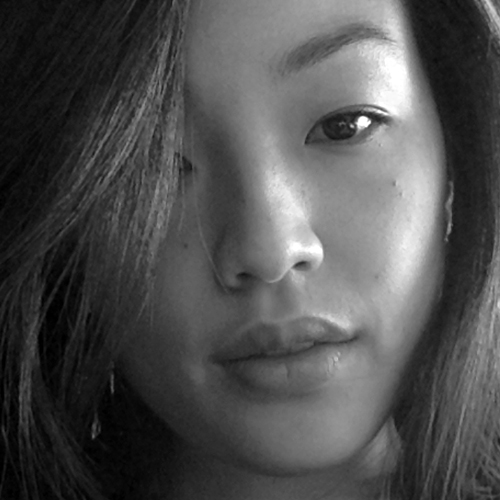

Ming Lin & Heidi Maribut
Hong Kong, China / Copenhagen, Denmark
RADIO P.D.O. (D.O.P.) Community Radio
This project brings together a diverse range of materials exploring, questioning, and subverting static and homogenizing narratives of the “Protected Designation of Origin” (P.D.O) in Taleggio Valley. The programme takes as it’s starting point a conception of heritage as a matter of ‘re-invention’ that builds upon existing traditions, but allows such definition to be expansive in scope. Inspired by the amateur “Ham” radio technology which typically harnesses the network for the purposes of non-commercial exchange, and regarding the antenna as both a symbol and device—as the highest place and nodal point witnessing a ‘co-naturality’ between human networks and natural geography of a region—intangible radio wave frequencies allow other narratives from within the valley to filter through. Taking poetic liberties with the abbreviation P.D.O., each segment of the programme explores several moments defining an elusive “community” which, in light of the tensions produced when local production and life ways run up against the demands of the global economy, are frequently thrown into flux. In both form and subject-matter, RADIO P.D.O. transgresses territorial and cultural boundaries in order to move away from a static or belabored rhetoric of authenticity and closer to definitions inspired by movement, hybridity and itinerancy.
A collaboration between Ming Lin, a writer-researcher interested in global production chains, and Heidi Maribut, a visual artist looking at identity within globalization.
Listen to: RADIO P.D.O. (D.O.P.) Community Radio
Hong Kong, China / Copenhagen, Denmark
RADIO P.D.O. (D.O.P.) Community Radio
This project brings together a diverse range of materials exploring, questioning, and subverting static and homogenizing narratives of the “Protected Designation of Origin” (P.D.O) in Taleggio Valley. The programme takes as it’s starting point a conception of heritage as a matter of ‘re-invention’ that builds upon existing traditions, but allows such definition to be expansive in scope. Inspired by the amateur “Ham” radio technology which typically harnesses the network for the purposes of non-commercial exchange, and regarding the antenna as both a symbol and device—as the highest place and nodal point witnessing a ‘co-naturality’ between human networks and natural geography of a region—intangible radio wave frequencies allow other narratives from within the valley to filter through. Taking poetic liberties with the abbreviation P.D.O., each segment of the programme explores several moments defining an elusive “community” which, in light of the tensions produced when local production and life ways run up against the demands of the global economy, are frequently thrown into flux. In both form and subject-matter, RADIO P.D.O. transgresses territorial and cultural boundaries in order to move away from a static or belabored rhetoric of authenticity and closer to definitions inspired by movement, hybridity and itinerancy.
A collaboration between Ming Lin, a writer-researcher interested in global production chains, and Heidi Maribut, a visual artist looking at identity within globalization.
Listen to: RADIO P.D.O. (D.O.P.) Community Radio
RADIO P.D.O. Radio comunitaria
RADIO P.D.O. riunisce una vasta gamma di materiali che esplorano, mettono in discussione e sovvertono le narrazioni statiche e omogeneizzanti della "Denominazione di Origine Protetta" (D.O.P) nella Valle del Taleggio. Il programma prende come punto di partenza una concezione del patrimonio come una questione di "re-invenzione" che si basa su tradizioni esistenti, ma consente a tale definizione di essere espansiva nel suo ambito. Ispirato alla tecnologia radioamatoriale "Ham" che tipicamente sfrutta la rete ai fini dello scambio non commerciale, e considerando l'antenna sia come simbolo, sia come dispositivo, come il posto più alto e il punto nodale, che testimonia una "co-naturalità" tra i network umani e la geografia naturale di una regione - le frequenze di onde radio intangibili permettono ad altre narrazioni dall'interno della valle di filtrare. Prendendo libertà poetiche con la sigla DOP, ogni segmento del programma esplora diversi momenti che definiscono una "community" elusiva che, alla luce delle tensioni prodotte quando la produzione locale e le vie della vita incontrano le esigenze dell'economia globale, vengono spesso gettati nel flusso. Sia nella forma che nell'oggetto, RADIO P.D.O. trasgredisce i confini territoriali e culturali per allontanarsi da una retorica statica o insinuata di autenticità e avvicinarsi a definizioni ispirate al movimento, all'ibridazione e all'itineranza.
Una collaborazione tra Ming Lin, scrittrice-ricercatrice interessata alle catene di produzione globali, e Heidi Maribut, artista visiva che guarda all'identità all'interno della globalizzazione.
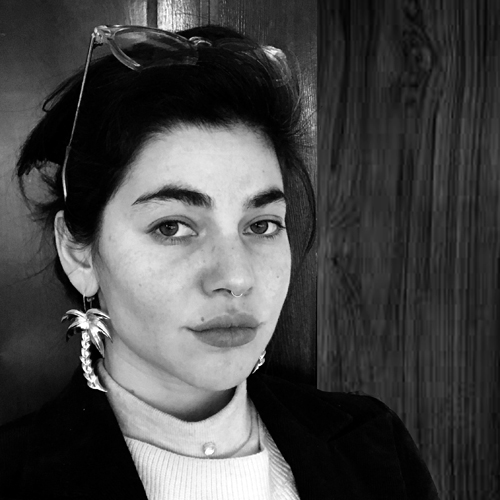
Sarah Kantrowitz
USA
Software Cheese: A dairy spa in the mountains.
This work is a prototype for a processing facility in modern regenerative cheesemaking. The simple, open-air plant offers the pleasures of making cheese in a liquid exchange, humbly inviting humans into new practices of ecological communion. Care for the milk and its microbes joins with care for the body joins with care for the built environment of the processing facility. Treatments include foot massage for curd cutting, face mask for straining whey, and steam bath for warming after laying cheese to rest in the cold wet of the Grotta dei Partigiani. The liberatory gay dairy spa endeavors to hybridize across modern and traditional production modalities, to accept the limitations of both with grace, and to whisper of new, powerfully nourishing relational logics for commercial food processing. Currently accepting investors to partner in construction of permanent facility; contact sarah.e.kantrowitz@gmail.com
Sarah Kantrowitz is a designer working at the intersection of food justice and the built environment, primarily through the design of infrastructure for stronger regional food systems. Current work includes supporting small businesses by better attuning food safety regulations to the dynamics of moisture migration and microbial growth in open fermentation facilities. She holds a Master of Architecture from the Harvard Graduate School of Design and a Bachelor of Arts in Linguistics from Reed College.
USA
Software Cheese: A dairy spa in the mountains.
This work is a prototype for a processing facility in modern regenerative cheesemaking. The simple, open-air plant offers the pleasures of making cheese in a liquid exchange, humbly inviting humans into new practices of ecological communion. Care for the milk and its microbes joins with care for the body joins with care for the built environment of the processing facility. Treatments include foot massage for curd cutting, face mask for straining whey, and steam bath for warming after laying cheese to rest in the cold wet of the Grotta dei Partigiani. The liberatory gay dairy spa endeavors to hybridize across modern and traditional production modalities, to accept the limitations of both with grace, and to whisper of new, powerfully nourishing relational logics for commercial food processing. Currently accepting investors to partner in construction of permanent facility; contact sarah.e.kantrowitz@gmail.com
Sarah Kantrowitz is a designer working at the intersection of food justice and the built environment, primarily through the design of infrastructure for stronger regional food systems. Current work includes supporting small businesses by better attuning food safety regulations to the dynamics of moisture migration and microbial growth in open fermentation facilities. She holds a Master of Architecture from the Harvard Graduate School of Design and a Bachelor of Arts in Linguistics from Reed College.
Software Cheese: A dairy spa in the mountains.
Questo progetto è un prototipo di un impianto di produzione che vuole esprimere una visione moderna e rigenerativa di processi di produzione del formaggio. In Primis il semplice operare all’aria aperta offre il piacere di fare il formaggio inseriti uno scambio liquido e naturale con le circostanze e invitando le persone a stabilire nuove pratiche di comunione e comunicazione con l’ambiente circostante. Prendersi cura del latte e lavorare lavorarlo, avendo consapevolezza di tutto il suo patrimonio microbiologio, diventa un tutt’uno con il prendersi cura di se stessi e con l’ambiente circostante e le relative strutture esistenti e insistenti sul territorio. I trattamenti includono il massaggio ai piedi fatto con la cagliata, una maschera facciale fatta con il caglio ottenuto dal processo di coagulazione del latte, e un bagno di vapore caldo che avviene dopo aver depositato il formaggio prodotto, con le proprie mani, all’interno della Grotta dei Partigiani, dove la cagliata potrà essere lasciata a riposare. Questa gay spa-latteria tenta di collocare e intersecare tra loro modalità di produzione moderne e tradizionali, al fine di evidenziare e comprendere i limiti di entrambe le modalità , e ha la volontà di far intravedere nuove potenziali logiche nei processi di produzione e commercializzazione del formaggio e più in generale deli alimenti naturali. avremo il piacere di prendere in considerazioni investitori disponibili e interessati alla costruzione di una strutture permanente. per ogni dettaglio contattare: sarah.e.kantrowitz@gmail.com
Sarah Kantrowitz è un designer che lavora all'incrocio tra giustizia alimentare e ambiente costruito, principalmente attraverso la progettazione di infrastrutture per sistemi alimentari regionali più forti. Il lavoro attuale include il sostegno alle piccole imprese attraverso una migliore armonizzazione delle normative sulla sicurezza alimentare con la dinamica della migrazione dell'umidità e la crescita microbica nelle strutture di fermentazione aperta. Ha conseguito un Master of Architecture presso la Harvard Graduate School of Design e un Bachelor of Arts in Linguistics presso il Reed College.
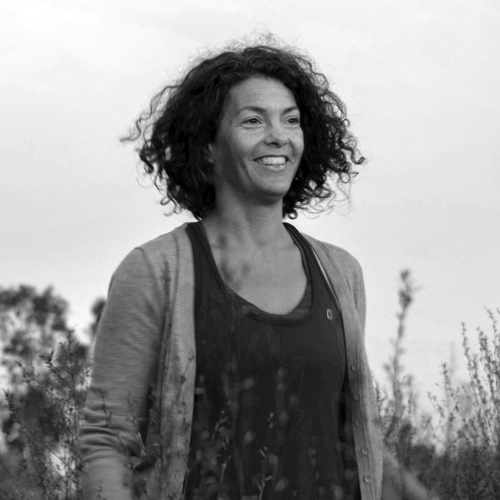
Rachael Mead
Austrialia
chlorophyll and casein, an ecopoetry collection
This collection comprises a linked suite of ecopoems that explore and distil the valley’s rich cultural history, the ecology of the region and the interconnections that exist between the cheesemaking process and the landscape. Through form, content and sensory observation, these poems bear witness to the Taleggio Valley at this particular moment in time and strive to evoke an authentic sense of place, emphasising ecological connectivity and the interdependence of culture, tradition and landscape.
Rachael Mead is a poet, short story writer and arts critic living in South Australia. She has an Honours degree in Classical Archaeology, a Masters in Environmental Studies and a PhD in Literature from the University of Adelaide. Her poetry collections include The Flaw in the Pattern (UWAP 2018), The Sixth Creek (Picaro Press 2013) and Sliding Down the Belly of the World (Wakefield Press 2012). She has a collection of short fiction forthcoming in 2020.
Austrialia
chlorophyll and casein, an ecopoetry collection
This collection comprises a linked suite of ecopoems that explore and distil the valley’s rich cultural history, the ecology of the region and the interconnections that exist between the cheesemaking process and the landscape. Through form, content and sensory observation, these poems bear witness to the Taleggio Valley at this particular moment in time and strive to evoke an authentic sense of place, emphasising ecological connectivity and the interdependence of culture, tradition and landscape.
Rachael Mead is a poet, short story writer and arts critic living in South Australia. She has an Honours degree in Classical Archaeology, a Masters in Environmental Studies and a PhD in Literature from the University of Adelaide. Her poetry collections include The Flaw in the Pattern (UWAP 2018), The Sixth Creek (Picaro Press 2013) and Sliding Down the Belly of the World (Wakefield Press 2012). She has a collection of short fiction forthcoming in 2020.
clorofilla e caseina, una collezione di ecopoesie
Questa collezione comprende una serie di ecopoemi collegati, che esplorano e “distillano” la ricca storia culturale della valle, l'ecologia della regione e le interconnessioni che esistono tra il processo di produzione del formaggio e il paesaggio. Attraverso la forma, il contenuto e l'osservazione sensoriale, queste poesie testimoniano la Val Taleggio in questo particolare momento e si sforzano di evocare un autentico senso del luogo, sottolineando la connettività ecologica e l'interdipendenza tra cultura, tradizione e paesaggio.
Rachael Mead è una poetessa, scrittrice di racconti e critica d'arte che vive nell’Australia del Sud. Ha una laurea con Lode in Archeologia Classica, un Master in Studi Ambientali e un dottorato in Letteratura presso l'Università di Adelaide. Le sue raccolte di poesie includono The Flaw in the Pattern (UWAP 2018), The Sixth Creek (Picaro Press 2013) e Sliding Down the Belly of the World (Wakefield Press 2012). La sua prima collezione di racconti brevi verra’ pubblicata nel 2020.

Siobhan Rigg
Rumination and Collected Action Rumination and Collected Action
This project explores Val Taleggio from the perspective of the first steps in the chain of cheese production – the pastures and grazing animals. Grass and cultures are the source of energy that drives the cheese chain. But the tastes and agency of many actors drive decisions at each step, shaping the systems and landscape of the valley in small and large ways. In this context, the language of policy feels disconnected from the ways the actors within the cheese chain make decisions for themselves. In Rumination and Collected Action, the grasses, herbs and associated plants of the pasture push back - exploring the possibilities of sovereignty and political representation without independence and writing their words in pigment produced from their bodies.
Siobhan Rigg is a Washington, DC-based interdisciplinary artist whose creative work and research interests center on how complex issues are formed from the ways that lived spaces and relationships connect with mediated information and virtual encounters. Rigg’s creative and research interests center on the social and environmental histories of particular places and stories and their entrance into the political sphere.
Rumination and Collected Action Rumination and Collected Action
This project explores Val Taleggio from the perspective of the first steps in the chain of cheese production – the pastures and grazing animals. Grass and cultures are the source of energy that drives the cheese chain. But the tastes and agency of many actors drive decisions at each step, shaping the systems and landscape of the valley in small and large ways. In this context, the language of policy feels disconnected from the ways the actors within the cheese chain make decisions for themselves. In Rumination and Collected Action, the grasses, herbs and associated plants of the pasture push back - exploring the possibilities of sovereignty and political representation without independence and writing their words in pigment produced from their bodies.
Siobhan Rigg is a Washington, DC-based interdisciplinary artist whose creative work and research interests center on how complex issues are formed from the ways that lived spaces and relationships connect with mediated information and virtual encounters. Rigg’s creative and research interests center on the social and environmental histories of particular places and stories and their entrance into the political sphere.
Ruminazione e azione di raccolta Rumination and Collected Action
Questo progetto esplora la Val Taleggio dal punto di vista delle prime fasi della catena di produzione del formaggio: i pascoli e gli animali al pascolo. L'erba e le culture sono la fonte di energia che guida la catena del formaggio. Ma i gusti e l'azione di molti attori influenzano le decisioni ad ogni passo, modellando i sistemi e il paesaggio della Valle con interventi piccoli e grandi. In questo contesto, il linguaggio della politica si percepisce distaccato dal modo in cui gli attori all'interno della catena del formaggio prendono decisioni per se stessi. In Ruminazione e azione raccolta, le erbe e le piante dei pascoli rilanciano - esplorando le possibilità di sovranità e rappresentanza politica interdipendente, scrivendo le loro parole con pigmenti prodotti dai loro stessi corpi.
Siobhan Rigg è un’artista interdisciplinare di Washington, DC il cui lavoro creativo e gli interessi di ricerca si concentrano su come le questioni complesse sono influenzate dai modi in cui gli spazi vissuti e le relazioni si connettono con informazioni mediate e incontri virtuali. Gli interessi creativi e di ricerca di Rigg si concentrano sulle narrazioni sociali e ambientali di luoghi e storie particolari e sul loro ingresso nella sfera politica.






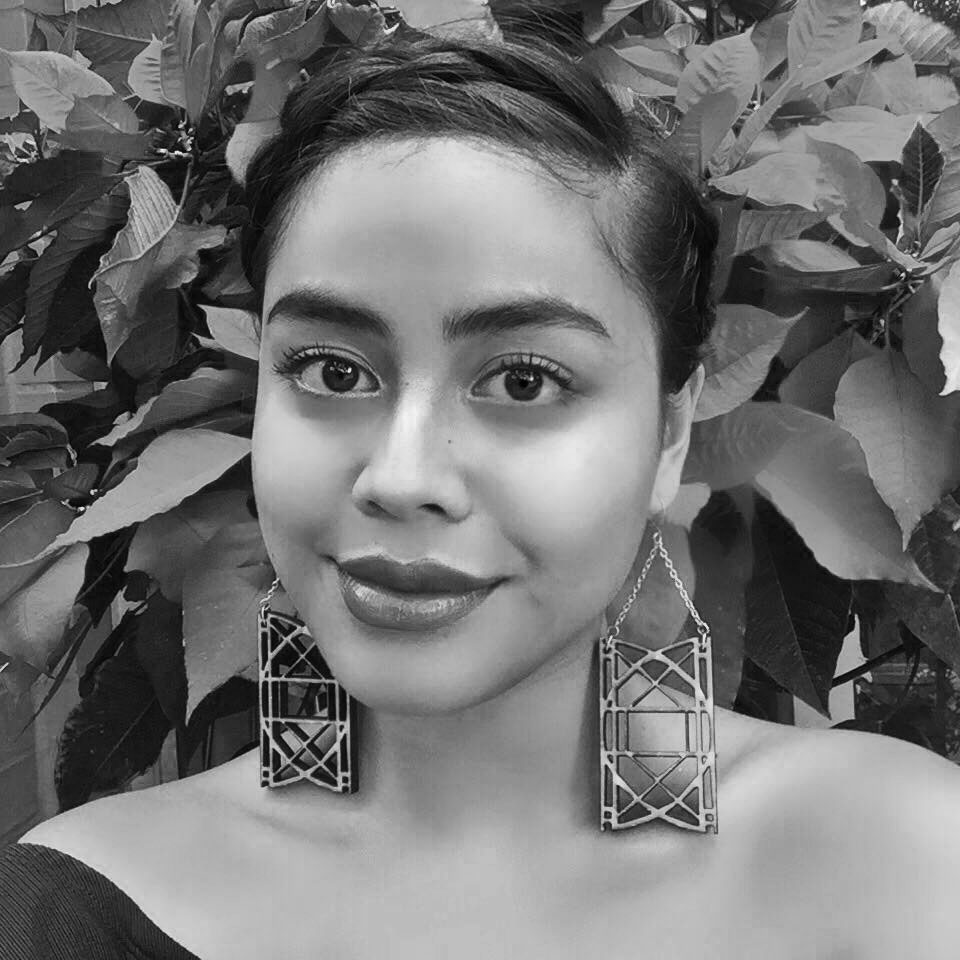
Eunice Andrada
Sydney, Australia
To Speak Water
Part poetry and part lyric collection, To Speak Water explores the open wounds of water memory. Across languages and bodies of water in the Taleggio Valley to the Philippine islands, these poems speak to the personhood of water as witness, as deity, as sexual being and as a vessel for inherited traumas. Giving a voice to the violences that water endures, Andrada pays homage to Italian poetic forms and Hiligaynon beliefs in her series of communions with water. You can explore the poetic soundscapes that accompany each section of the collection here: https://soundcloud.com/eunice-andrada
Eunice Andrada is an award-winning Filipina poet, lyricist and teaching artist based in Sydney, Australia. Featured in The Guardian, CNN International, ABC News and other media, she has performed her poetry in diverse international stages, from the Sydney Opera House to the UN Climate Negotiations in Paris. Her work has been translated into Tagalog, Hiligaynon, French, Japanese, Czech and Italian. In 2018, the Amundsen-Scott Station in the South Pole of Antarctica will feature her poetry in a special exhibition on climate change. Flood Damages is her first book of poetry: https://goo.gl/prWTTf
Sydney, Australia
To Speak Water
Part poetry and part lyric collection, To Speak Water explores the open wounds of water memory. Across languages and bodies of water in the Taleggio Valley to the Philippine islands, these poems speak to the personhood of water as witness, as deity, as sexual being and as a vessel for inherited traumas. Giving a voice to the violences that water endures, Andrada pays homage to Italian poetic forms and Hiligaynon beliefs in her series of communions with water. You can explore the poetic soundscapes that accompany each section of the collection here: https://soundcloud.com/eunice-andrada
Eunice Andrada is an award-winning Filipina poet, lyricist and teaching artist based in Sydney, Australia. Featured in The Guardian, CNN International, ABC News and other media, she has performed her poetry in diverse international stages, from the Sydney Opera House to the UN Climate Negotiations in Paris. Her work has been translated into Tagalog, Hiligaynon, French, Japanese, Czech and Italian. In 2018, the Amundsen-Scott Station in the South Pole of Antarctica will feature her poetry in a special exhibition on climate change. Flood Damages is her first book of poetry: https://goo.gl/prWTTf
Parlare acqua
Parte poesia, parte lirica, Parlare Acqua esplora le ferite aperte della memoria dell'acqua. Attraverso lingue e corpi d’acqua dalla Val Taleggio alle isole filippine, queste poesie parlano alla impersonificazione dell'acqua come testimone, come divinità, come essere sessuale e come recipiente per i traumi ereditati. Dando voce alle violenze che l'acqua sopporta, Andrada rende omaggio alle forme poetiche italiane e alle credenze di Hiligaynon nella sua serie di comunioni con l'acqua.
Eunice Andrada è una poetessa filippina pluripremiata, paroliere e insegnante. Vive a Sydney, in Australia. Pubblicata su The Guardian, CNN International, ABC News e altri media, ha recitato la sua poesia in diversi palcoscenici internazionali, dalla Sydney Opera House ai negoziati sul clima delle Nazioni Unite a Parigi. Il suo lavoro è stato tradotto in Tagalog, Hiligaynon, francese, ceco, giapponese e italiano. Nel 2018, la stazione Amundsen-Scott nel Polo Sud dell'Antartide mostrerà la sua poesia in una mostra speciale sui cambiamenti climatici. Flood Damages è il suo primo libro di poesie.

Jill Anholt
Vancouver, BC Canada
Water:Life
Pure potable water, some of the best in the world, is diverted directly from mineral springs to flow continuously through thousands of public drinking fountains in Italy, delivering a message of water as an infinite, inexhaustible resource. In our current global context of a changing climate, water can no longer be taken for granted as ecosystems and environments that protect vital water resources are becoming more threatened. Drawing attention to the local natural and constructed systems that deliver and dispose of this valuable yet under-appreciated resource, my project provokes people, to notice water again and to remember how precious and important it is to life in all forms.
Jill Anholt is an artist living in Vancouver, Canada who holds both a Master’s degree in Architecture and a Bachelor’s degree in Science. Her art practice centers on the creation of context specific installations in public spaces. Jill has installed more than 30 permanent works ranging from smaller scale interactive sculptural elements to complex integrated civic projects for cities across North America. The works she creates reveal invisible processes and hidden narratives, exploring the complex relationship between nature and culture.
Vancouver, BC Canada
Water:Life
Pure potable water, some of the best in the world, is diverted directly from mineral springs to flow continuously through thousands of public drinking fountains in Italy, delivering a message of water as an infinite, inexhaustible resource. In our current global context of a changing climate, water can no longer be taken for granted as ecosystems and environments that protect vital water resources are becoming more threatened. Drawing attention to the local natural and constructed systems that deliver and dispose of this valuable yet under-appreciated resource, my project provokes people, to notice water again and to remember how precious and important it is to life in all forms.
Jill Anholt is an artist living in Vancouver, Canada who holds both a Master’s degree in Architecture and a Bachelor’s degree in Science. Her art practice centers on the creation of context specific installations in public spaces. Jill has installed more than 30 permanent works ranging from smaller scale interactive sculptural elements to complex integrated civic projects for cities across North America. The works she creates reveal invisible processes and hidden narratives, exploring the complex relationship between nature and culture.
Acqua:Vita
In Italia, l’acqua potabile pura, tra le migliori al mondo, viene deviata direttamente dalle sorgenti minerali pre scorrere continuamente attraverso migliaia di fontanelle pubbliche, offrendo un messaggio che l’acqua sia una risorsa infinita ed inesauribile. Nel nostro attuale contesto globale di un clima che cambia, l'acqua non può più essere data per scontata in quanto gli ecosistemi e gli ambienti che proteggono le risorse idriche vitali sono sempre più minacciati. Attirando/Ponendo l'attenzione sui sistemi locali naturali e costruiti che forniscono e smaltiscono questa risorsa preziosa ma sottovalutata, il mio progetto stimola le persone a notare di nuovo l'acqua e a ricordare quanto sia preziosa e importante per la vita in tutte le sue forme.
Jill Anholt è un'artista che vive a Vancouver BC, con un Master in Architettura e una laurea in Scienze. La sua pratica artistica è incentrata sulla creazione di installazioni contestuali specifiche per spazi pubblici. Jill ha installato più di 30 opere permanenti che vanno dagli elementi scultorei interattivi su scala ridotta a complessi progetti civici integrati per le città del Nord America. Le opere che crea rivelano processi invisibili e narrazioni nascoste, esplorando la complessa relazione tra natura e cultura.

Tiffany Henschel
USA
Time is Water
This project is a multimedia exploration into water as an indication of time in the Taleggio Valley. It studies the effects of water as they relate to growth, decay, subjectivity, and personal bias through different visualizations and interfaces. Inspired by a plastic bag found during a hike that had essentially turned into the shape of a rock through years of impact with rushing water, these studies hope to enhance our understanding of water as a precious, powerful, yet finite resource rather than omnipresent and perpetual, even in a region where it is seemingly abundant.
Tiffany Henschel is an interdisciplinary designer, researcher, and data lover using new media and technology to uncover connections in hyperlocal spaces. She combines physical and digital worlds to reveal ephemeral aspects and methods of communication and interpersonal exchange. Intrigued with how people navigate through local spaces and spread ideas over time, she has a keen interest in wayfinding and maps, and prefers to“sweat the small stuff,” focusing on the liminal, the minutiae, to see how they affect the macro. Tiffany recently received her MFA (and NAHR Fellowship) in Media Design Practices from Art Center College of Design in Pasadena.
USA
Time is Water
This project is a multimedia exploration into water as an indication of time in the Taleggio Valley. It studies the effects of water as they relate to growth, decay, subjectivity, and personal bias through different visualizations and interfaces. Inspired by a plastic bag found during a hike that had essentially turned into the shape of a rock through years of impact with rushing water, these studies hope to enhance our understanding of water as a precious, powerful, yet finite resource rather than omnipresent and perpetual, even in a region where it is seemingly abundant.
Tiffany Henschel is an interdisciplinary designer, researcher, and data lover using new media and technology to uncover connections in hyperlocal spaces. She combines physical and digital worlds to reveal ephemeral aspects and methods of communication and interpersonal exchange. Intrigued with how people navigate through local spaces and spread ideas over time, she has a keen interest in wayfinding and maps, and prefers to“sweat the small stuff,” focusing on the liminal, the minutiae, to see how they affect the macro. Tiffany recently received her MFA (and NAHR Fellowship) in Media Design Practices from Art Center College of Design in Pasadena.
Tempo e’ Acqua
Questo progetto è un'esplorazione multimediale che usa l'acqua come indicazione del tempo nella Val Taleggio. Studia gli effetti dell'acqua in relazione a crescita, decadimento, soggettività e pregiudizi personali attraverso diverse visualizzazioni e interfacce. Ispirata dal ritrovamento di una borsa di plastica appallottolata, trovata durante una passeggiata, che si è essenzialmente trasformata in una roccia in anni di impatto con l'acqua che scorre, questi studi sperano di migliorare la nostra comprensione dell'acqua come risorsa preziosa, potente, ma limitata piuttosto che onnipresente e perpetua, anche in una regione in cui è apparentemente abbondante.
Tiffany Henschel è una designer interdisciplinare, ricercatrice e amante dei dati che usa nuovi media e tecnologia per scoprire connessioni in spazi iperlocali. Combina mondi fisici e digitali per rivelare aspetti effimeri e metodi di comunicazione e scambio interpersonale. Incuriosita dal modo in cui le persone navigano attraverso gli spazi locali e nella diffusione delle idee nel tempo, ha un forte interesse per wayfinding e mappe, e preferisce concentrandosi sul liminale, le minuzie, i dettagli per capire come il micro influenza il macro. Tiffany ha recentemente ricevuto il suo MFA (e la Fellowship NAHR) in Media Design Practices presso l'Art Center College of Design di Pasadena.
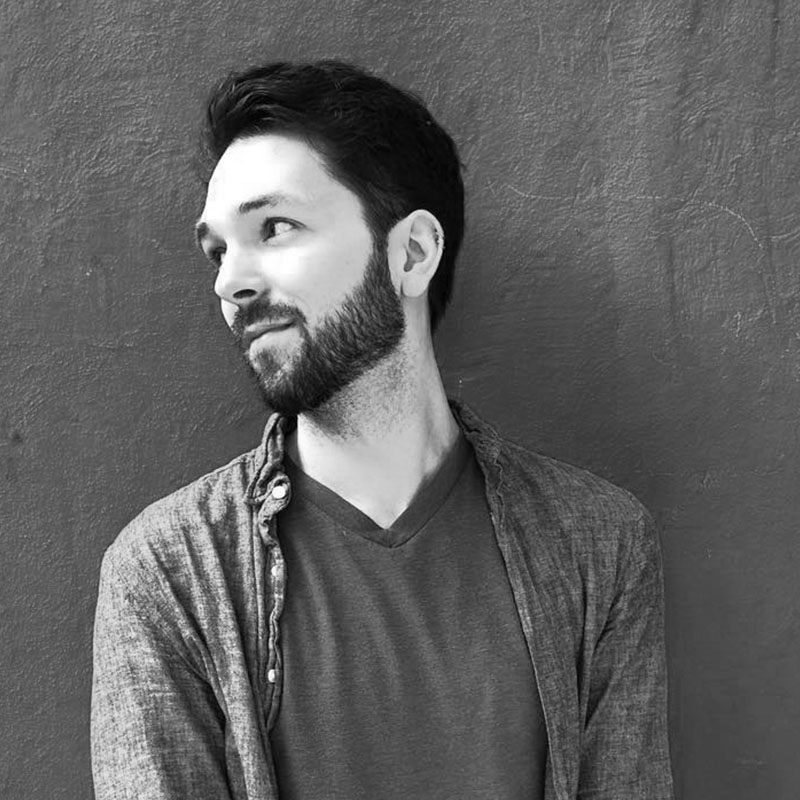
Samuel Maddox
Boston, MA USA
Sip, Serve, Share: Symbiotic Pottery
Water is political, not partisan. It simultaneously inscribes lines between countries, peoples, races, and still flows defiantly past political boundaries. Water can be both a promising means of transport and yet menacingly scarce to the imperiled and disenfranchised who migrate toward the pull of prosperity; their paths across seas and deserts like the streams that wind down the mountainside, beckoned by gravity. Even the simple water fountain brings with it a multifarious and divisive past. Where mid-century drinking fountains were divided by race in the American south, Italian fountains have long stood as a physical manifestation of democracy. The Italian fontanelle acts as a node of sociality and a place where differences are cast aside as our universal need for water unites those of various classes, races, genders, nationalities, and even species. As our world becomes increasingly divided by toxic politics and advanced capitalism, the infrastructure of the fountain stands as a reminder of our shared dependence upon both water and one another. Sip, Serve, Share is a collection of clay vessels that each reactivate the environ of the public fountain as social node by necessitating communication and collaboration in order to achieve their individual functions.
Samuel Maddox is an architect and academic studying Urbanism, Landscape, and Ecology at Havard’s GSD. His research is at the intersection of landscape and sociocultural practices with particular interest in economic flows and equitable disparities between urban and rural populations.
Boston, MA USA
Sip, Serve, Share: Symbiotic Pottery
Water is political, not partisan. It simultaneously inscribes lines between countries, peoples, races, and still flows defiantly past political boundaries. Water can be both a promising means of transport and yet menacingly scarce to the imperiled and disenfranchised who migrate toward the pull of prosperity; their paths across seas and deserts like the streams that wind down the mountainside, beckoned by gravity. Even the simple water fountain brings with it a multifarious and divisive past. Where mid-century drinking fountains were divided by race in the American south, Italian fountains have long stood as a physical manifestation of democracy. The Italian fontanelle acts as a node of sociality and a place where differences are cast aside as our universal need for water unites those of various classes, races, genders, nationalities, and even species. As our world becomes increasingly divided by toxic politics and advanced capitalism, the infrastructure of the fountain stands as a reminder of our shared dependence upon both water and one another. Sip, Serve, Share is a collection of clay vessels that each reactivate the environ of the public fountain as social node by necessitating communication and collaboration in order to achieve their individual functions.
Samuel Maddox is an architect and academic studying Urbanism, Landscape, and Ecology at Havard’s GSD. His research is at the intersection of landscape and sociocultural practices with particular interest in economic flows and equitable disparities between urban and rural populations.
Sorseggia, Servi, Condividi: Ceramica simbiotica
L'acqua è politica, non partigiana. Imprime simultaneamente le linee tra paesi, popoli, razze, ma scorre in modo provocatorio oltre i confini politici. L'acqua può essere sia un mezzo di trasporto promettente, ma minacciosamente minaccioso per gli inermi e i diseredati che migrano verso l'attrazione della prosperità; i loro sentieri attraverso mari e deserti come i torrenti che si snodano lungo la montagna, attirati dalla gravità. Anche la semplice fontana d'acqua porta con sé un passato multiforme e divisivo. Laddove le fontane sono state divisione etnica nel sud americano, le fontane italiane sono state a lungo una manifestazione fisica della democrazia. La fontana italiana agisce come un nodo di socialità e un luogo in cui le differenze sono messe da parte, poiché il nostro bisogno universale di acqua unisce quelli di varie classi, razze, generi, nazionalità e persino specie. Mentre il nostro mondo diventa sempre più diviso dalla politica tossica e dal capitalismo avanzato, l'infrastruttura della fontana si pone come promemoria della nostra dipendenza condivisa sia dall'acqua che l’un l’altro. Sip, Serve, Share è una collezione di vasi di argilla che riattivano ciascuno l'ambiente della fontana pubblica come nodo sociale, rendendo necessaria la comunicazione e la collaborazione per raggiungere le funzioni individuali.
Samuel Maddox è un architetto degli Stati Uniti rurali che studia Urbanismo, Paesaggio ed Ecologia al GSD di Harvard. La sua ricerca esiste alla confluenza del paesaggio, dell'ecologia politica urbana e della pratica socioculturale con particolare interesse per le disparità economiche e di potere tra le popolazioni urbane e rurali.

Giulia Mattera
London, UK
Sensory Map
How does the body react to water? How does your body eliminate water and how do these processes affect the environment? What is the effect of cold water on the body? The final result of this research is a site-specific work consisting of a multi-sensorial map/guide that will lead each audience in an individual journey of self-discovery and reconnection. Via it the audience member will be able to directly engage and experience the effects of water through his/her emotional, sensorial and physical body.
Giulia Mattera is a performance artist whose work questions gender, everyday life and socially structured ritualized behaviors. Her research based practice explores natural elements via the body, through which she sets herself tasks that deal with failure and challenge the preconceptions of bodymind limitations.
London, UK
Sensory Map
How does the body react to water? How does your body eliminate water and how do these processes affect the environment? What is the effect of cold water on the body? The final result of this research is a site-specific work consisting of a multi-sensorial map/guide that will lead each audience in an individual journey of self-discovery and reconnection. Via it the audience member will be able to directly engage and experience the effects of water through his/her emotional, sensorial and physical body.
Giulia Mattera is a performance artist whose work questions gender, everyday life and socially structured ritualized behaviors. Her research based practice explores natural elements via the body, through which she sets herself tasks that deal with failure and challenge the preconceptions of bodymind limitations.
Mappa Sensoriale
Come reagisce il corpo a contatto con l’acqua? In quali modi il corpo elimina l’acqua e qual è l’effetto di questi processi sull’ambiente circostante? Qual è l’effetto dell’acqua fredda sul corpo? Il risultato finale di questa ricerca è un lavoro site-specific che consiste in una mappa / guida multisensoriale che condurrà ciascun pubblico in un percorso individuale di scoperta di sé e riconnessione. In questo modo, il membro del pubblico sarà in grado di coinvolgere direttamente e sperimentare gli effetti dell'acqua attraverso il suo corpo emotivo, sensoriale e fisico.
Giulia Mattera è una performance artist il cui lavoro mette in discussione il genere, la vita di tutti i giorni e comportamenti ritualizzati strutturati socialmente. La sua pratica basata sulla ricerca esplora gli elementi naturali attraverso il corpo, attraverso i quali si pone dei compiti che affrontano il problema e sfidano i preconcetti delle limitazioni della mente e del corpo.

Skye Moret
USA
Cues for Immersion
I explored the nuanced, indexical thresholds within the Taleggio landscape and aquatic ecosystems and paired these experiments with an investigation of investigation itself. What makes a place truly unique? What objective and subjective cues allow us to understand our environment and how can we reflexively explore these cues? By highlighting thresholds visually, I created prompt cards that allow both residents and visitors to explore and discuss the valley’s environment at multiple spatial scales. Through curious engagement and transdisciplinary perspective, participants contextualize their natural surroundings in a rich and pragmatic way, adding to the collective dialogue of the valley.
Skye Moret is a data-driven designer. Her diverse background in marine science—having sailed 80,000+ miles around the globe—fuels her belief in the power of art and design in communicating nature and science. Her work investigates the complex relationship between nature and technology-mediated human expectations, experiences, and engagement.
USA
Cues for Immersion
I explored the nuanced, indexical thresholds within the Taleggio landscape and aquatic ecosystems and paired these experiments with an investigation of investigation itself. What makes a place truly unique? What objective and subjective cues allow us to understand our environment and how can we reflexively explore these cues? By highlighting thresholds visually, I created prompt cards that allow both residents and visitors to explore and discuss the valley’s environment at multiple spatial scales. Through curious engagement and transdisciplinary perspective, participants contextualize their natural surroundings in a rich and pragmatic way, adding to the collective dialogue of the valley.
Skye Moret is a data-driven designer. Her diverse background in marine science—having sailed 80,000+ miles around the globe—fuels her belief in the power of art and design in communicating nature and science. Her work investigates the complex relationship between nature and technology-mediated human expectations, experiences, and engagement.
Indizi per l’immersione
Ho indicizzato le soglie del paesaggio e dei sistemi acquatici della Val Taleggio esplorandone le sfumature. Accopiando questi esperimenti con un'indagine sull'indagine stessa. Cosa rende un luogo davvero unico? Quali indizi oggettivi e soggettivi ci consentono di comprendere il nostro ambiente e come possiamo esplorare riflessivamente questi segnali? Evidenziando visivamente le soglie, ho creato delle schede che consentono a residenti e visitatori di esplorare e discutere l'ambiente della valle a più dimensioni. Puntando sulla curiosita’ e il coinvolgimento, attraverso una prospettiva transdisciplinare, i partecipanti potranno contestualizzare il loro ambiente naturale in modo ricco e pragmatico, arricchendo nella Valle il dialogo collettivo.
Skye Moret è una information designer. Il suo background in scienze marine - ha navigato oltre 80.000 miglia in tutto il mondo - alimenta la sua convinzione nel potere dell'arte e del design nel comunicare natura e scienza. Il suo lavoro indaga la complessa relazione tra la natura e le aspettative, le esperienze e l'impegno umani mediati dalla tecnologia.
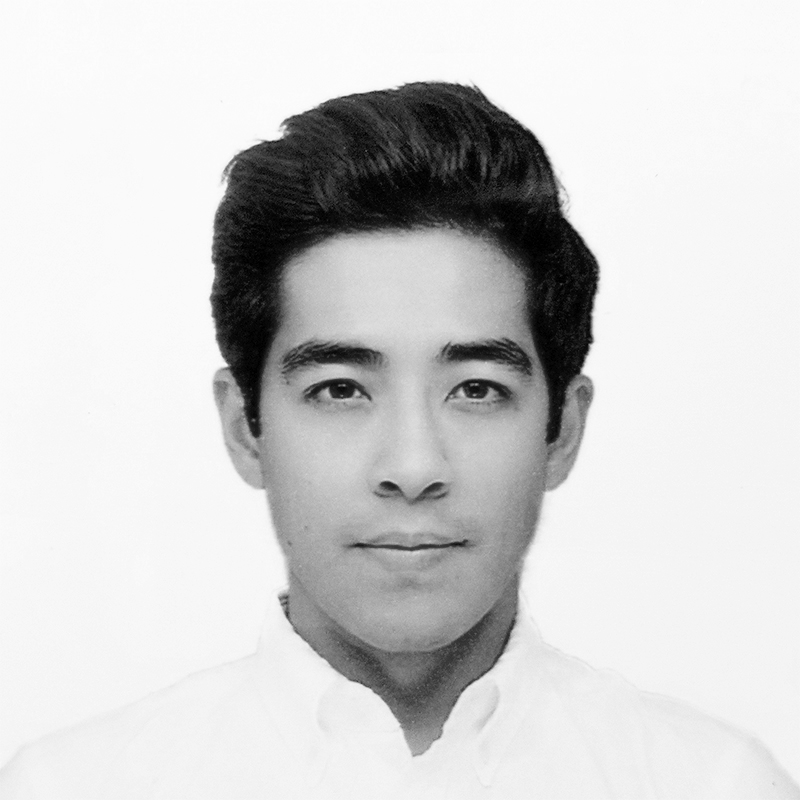
Matthew G. Wong
Boston, MA USA
Hidden Waters: Hybrid Representations of Val Taleggio
Hidden Waters is a portrait of Val Taleggio’s watershed, drawn with the intention of expanding the spatial understanding of the valley’s hydrologic network. By employing the use of drone technology, field notes, and analog forms of documentation, the investigation aims to develop a telescopic view of the valley’s hydroelectric infrastructural network along the Enna River in the Orridi. The drawing focuses on illustrating the relationship between infrastructure, topography and water as actors underlying Val Taleggio’s ecology.
Matthew G. Wong is a landscape designer exploring the interface between artificial and natural systems through various modes of representation. His current work concerns large scale landscapes of production involving agricultural arrangements and hydrologic systems of the southwest United States. He holds a Bachelor’s of Science from the University of California, Davis and a Masters of Landscape Architecture from the Harvard Graduate School of Design, where he was awarded the Norman T. Newton Prize.
Boston, MA USA
Hidden Waters: Hybrid Representations of Val Taleggio
Hidden Waters is a portrait of Val Taleggio’s watershed, drawn with the intention of expanding the spatial understanding of the valley’s hydrologic network. By employing the use of drone technology, field notes, and analog forms of documentation, the investigation aims to develop a telescopic view of the valley’s hydroelectric infrastructural network along the Enna River in the Orridi. The drawing focuses on illustrating the relationship between infrastructure, topography and water as actors underlying Val Taleggio’s ecology.
Matthew G. Wong is a landscape designer exploring the interface between artificial and natural systems through various modes of representation. His current work concerns large scale landscapes of production involving agricultural arrangements and hydrologic systems of the southwest United States. He holds a Bachelor’s of Science from the University of California, Davis and a Masters of Landscape Architecture from the Harvard Graduate School of Design, where he was awarded the Norman T. Newton Prize.
Acque Nascoste: Rappresentazioni ibride della Val Taleggio
Hidden Waters è un ritratto dello spartiacque della Val Taleggio, disegnato con l'intenzione di espandere la comprensione spaziale della rete idrologica della valle. Utilizzando la tecnologia del drone, appunti di campo e forme analogiche di documentazione, l'indagine mira a sviluppare una vista telescopica della rete idroelettrica della valle lungo il fiume Enna negli Orridi. Il disegno si concentra sull'illustrazione del rapporto tra infrastruttura, topografia e acqua come attori chiave dell'ecologia della Val Taleggio.
Matthew G. Wong è un paesaggista che esplora l'interfaccia tra sistemi artificiali e naturali attraverso varie modalità di rappresentazione. Il suo lavoro riguarda paesaggi di produzione su larga scala che coinvolgono sistemi agricoli e sistemi idrologici del sud-ovest degli Stati Uniti. Ha conseguito una laurea in scienze presso l'Università della California, Davis e un master in architettura del paesaggio presso la Harvard Graduate School of Design, dove ha ricevuto il premio Norman T. Newton.
2018 Alt. Residents
Stacy Passmore, Landscape Architect / USAEmma Strebel, Artist / USA
Paul Mosig & Rachel Peachey, Artists / Melbourne, Australia
Ashe Gutierez & Carley Culmo, Performing Artists / Florida, USA
Remnant Dance: Lucinda Coleman, Ellen Avery, Katie Chown, Performing Artists / Australia - PROJECT CULACCINI
Luisa Brando, Architect / Colombia
Cassandra Celestin, Artist / Athens, Greece
Brian Ng, Animator and Cook / California, USA
2018 Visitors
Paolo Belloni, Architect / Bergamo, ItalyGloria Cornolti, Prov. Bg / Bergamo, Italy
Pietro Invernizzi, Scalpellino / Val Imagna, Italy
Maurizio Ori, Landscape Architect / Cremona, CR, Italy
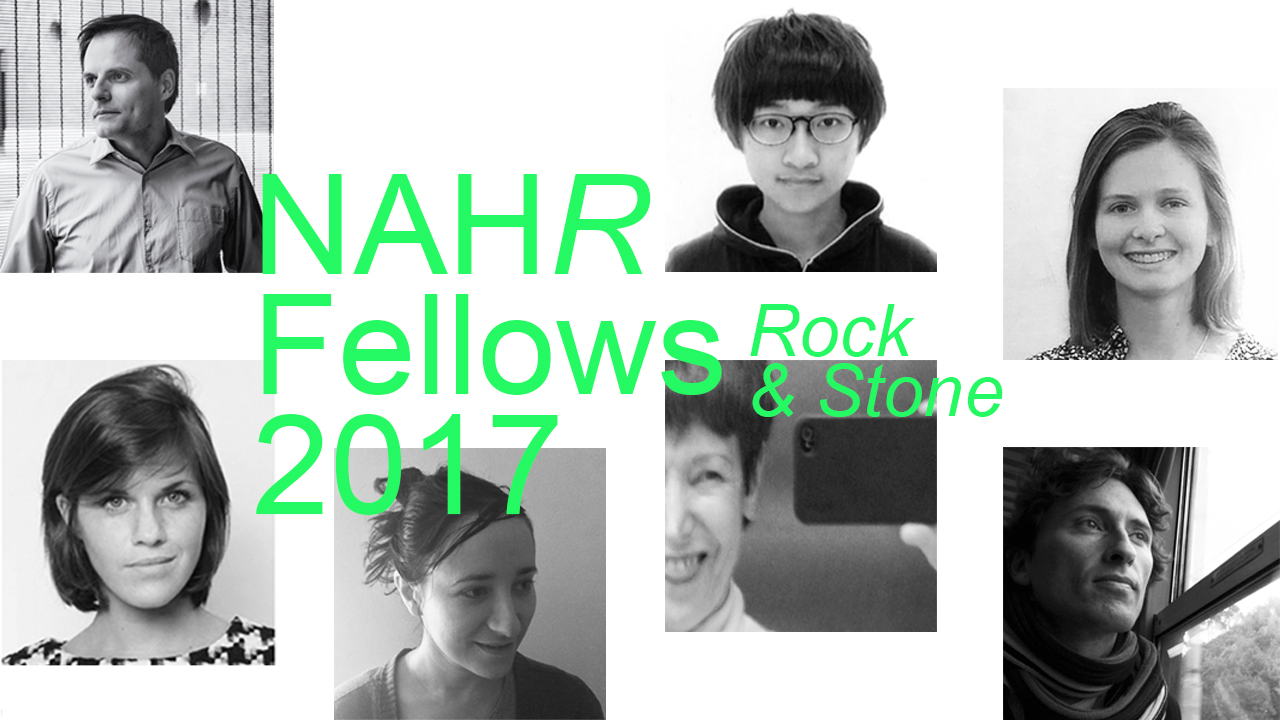
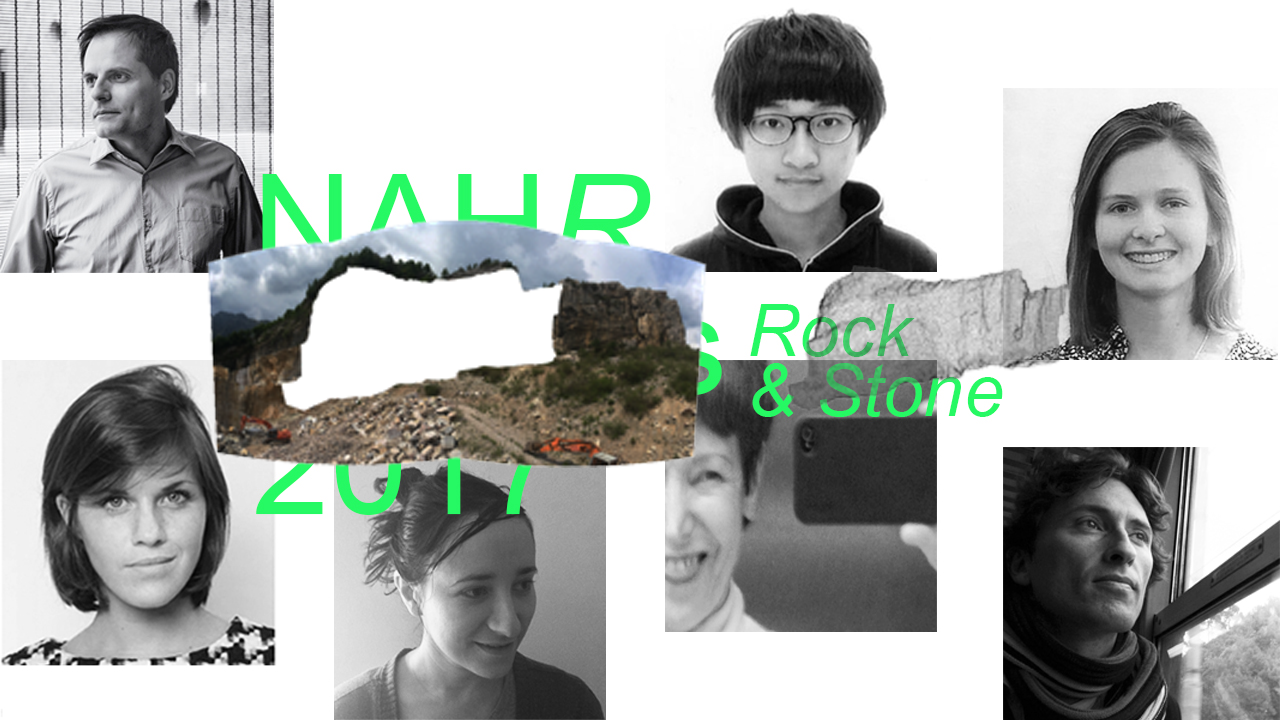






2017
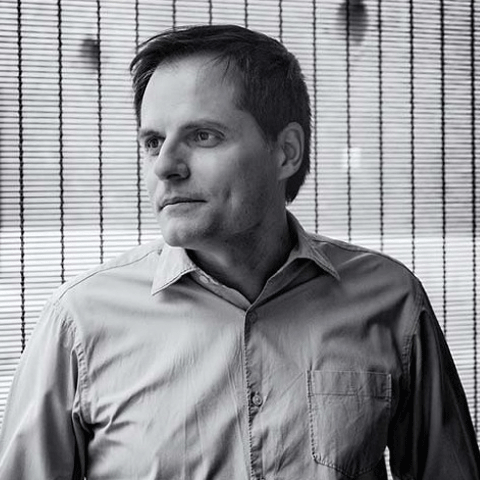
Juan Barte
Madrid, Spain
The Land is Good. Bio-Inspired Photography in the Taleggio Valley
This work explores the gap between images and objects, bridging this gap through a bio-inspired process that results in a perfect symbiosis between the natural constituents of the photography subjects and the actual photographs. The resulting photographs go beyond representation and metaphor merging culture and nature. To this end the darkroom process is polluted with the very essences of the Taleggio Valley: its water, soil, stones, bacteria... In this process the images are revealed through chance, noise and non-programed events. The result are photographs not consciously expected. They are at once serial and singular, have a mechanic look, but are done manually, each of them unique and unrepeatable.
Juan Barte born and raised in Spain had a diverse career that led him to live in places like Los Angeles, Tokyo, Laos, or Madrid. He worked as graphic designer for companies such as The Walt Disney Company. However, photography was always been one of his main fields of interest, so in 2012 he decided to devote himself fully to this “obsession.” Barte’s work has been widely published in specialized media and exhibited in both galleries and public institutions. He is also coordinator of Photobook Club Madrid, actively promoting photography culture through different events.
Madrid, Spain
The Land is Good. Bio-Inspired Photography in the Taleggio Valley
This work explores the gap between images and objects, bridging this gap through a bio-inspired process that results in a perfect symbiosis between the natural constituents of the photography subjects and the actual photographs. The resulting photographs go beyond representation and metaphor merging culture and nature. To this end the darkroom process is polluted with the very essences of the Taleggio Valley: its water, soil, stones, bacteria... In this process the images are revealed through chance, noise and non-programed events. The result are photographs not consciously expected. They are at once serial and singular, have a mechanic look, but are done manually, each of them unique and unrepeatable.
Juan Barte born and raised in Spain had a diverse career that led him to live in places like Los Angeles, Tokyo, Laos, or Madrid. He worked as graphic designer for companies such as The Walt Disney Company. However, photography was always been one of his main fields of interest, so in 2012 he decided to devote himself fully to this “obsession.” Barte’s work has been widely published in specialized media and exhibited in both galleries and public institutions. He is also coordinator of Photobook Club Madrid, actively promoting photography culture through different events.
Il terreno e’ buono. Fotografia Bio-Ispirata in Val Taleggio Il lavoro esplora il divario tra immagini e oggetti, colmando questa lacuna attraverso un processo bio-ispirato che si traduce in una perfetta simbiosi tra le componenti naturali dei soggetti della fotografia e le fotografie reali. Le fotografie che ne derivano vanno oltre la rappresentazione e la metafora fondendo cultura e natura.
Con quest’obiettivo il processo della camera oscura è contaminato con l'essenza stessa della Val Taleggio: l'acqua, il suolo, le pietre, i batteri... In questo processo le immagini vengono rivelate attraverso eventi, rumori e eventi non programmati. Il risultato è dato da fotografie “non-consapevoli”, seriali e singolari al contempo: esse hanno un aspetto meccanico, ma sono sviluppate manualmente, ognuna di esse unica e irripetibile.
Juan Barte nato e cresciuto in Spagna ha avuto una carriera variegata che lo ha portato a vivere in luoghi come Los Angeles, Tokyo, Laos o Madrid. Ha lavorato come grafico per aziende come The Walt Disney Company. Tuttavia, la fotografia è sempre stata uno dei suoi principali campi di interesse, per cui nel 2012 ha deciso di dedicarsi pienamente a questa "ossessione." Il suo lavoro è stato ampiamente pubblicato in riviste di settore ed esposte in gallerie private e pubbliche. È anche coordinatore di Photobook Club Madrid, che promuove attivamente la cultura della fotografia attraverso diversi eventi.

Ana Catalina Gubandru
Bucharest, Romania
Mysterious object, on hard
She will research the presence of the body within the rock and stone environment, the magical potential of the rocks and stones and its correspondence within humans and the human body. She will make performative interventions in the nature using body, rock and stone. The outcome will be the performance and the photo-video documentation of the process.
Ana Catalina Gubandru is an independent choreographer and performer, born and based in Bucharest, Romania.
She works with various concepts and media, performance, performing and body expressivity and
endeavors, written and improvised text, sound, interviews, photography, film, participatory art, reused handmade objects, making special, drawings, installations.
Bucharest, Romania
Mysterious object, on hard
She will research the presence of the body within the rock and stone environment, the magical potential of the rocks and stones and its correspondence within humans and the human body. She will make performative interventions in the nature using body, rock and stone. The outcome will be the performance and the photo-video documentation of the process.
Ana Catalina Gubandru is an independent choreographer and performer, born and based in Bucharest, Romania.
She works with various concepts and media, performance, performing and body expressivity and
endeavors, written and improvised text, sound, interviews, photography, film, participatory art, reused handmade objects, making special, drawings, installations.
Oggetto misterioso, duro
Il progetto esamina la presenza del corpo nell'ambiente roccioso e nella pietra, rivelando il potenziale magico delle rocce e delle pietre e la sua corrispondenza nell'uomo e, più in particolare, nel corpo umano attraverso una performance del corpo in natura, tra roccie e pietre. la restituzione del progetto è data dalla performance stessa con la documentazione fotografica e videografica del processo in corso.
Ana Catalina Gubandru è coreografa e performer indipendente, nata a Bucarest, in Romania, dove vive. Lavora con diversi concetti e strumenti, performance e espressività del corpo, testi scritti e improvvisati, suoni, interviste, fotografie, film, happening d’arte partecipativa, oggetti riutilizzati, processi speciali, disegni, installazioni.

Joshua G. Stein
Los Angeles, CA USA
Stone Scan Specimens: A Hybrid Language of Extraction and Assembly
Stone Scan Specimens is a taxonomy of the stone patterns generated by the various strategies of extraction and construction in the Val Brembana region. These 3D digital scans (created through photogrammetry technology) document a long history of human interface with the natural and geological surroundings. Although vernacular assemblies (baite huts, masonry walls of the mulattiere, piöde roofs, and stone churches) are an important part of the area’s cultural and physical patrimony, the sites of extraction that provided their materials are equally a part of the legacy of human invention and impact.
Joshua G. Stein is the founder Radical Craft, a Los Angeles-based studio that advances design saturated in history (from archaeology to craft) that inflects the production of contemporary urban spaces and artifacts. He is the co-director of the Data Clay Network, Professor of Architecture at Woodbury University, and was a 2010-11 Rome Prize Fellow in Architecture.
Los Angeles, CA USA
Stone Scan Specimens: A Hybrid Language of Extraction and Assembly
Stone Scan Specimens is a taxonomy of the stone patterns generated by the various strategies of extraction and construction in the Val Brembana region. These 3D digital scans (created through photogrammetry technology) document a long history of human interface with the natural and geological surroundings. Although vernacular assemblies (baite huts, masonry walls of the mulattiere, piöde roofs, and stone churches) are an important part of the area’s cultural and physical patrimony, the sites of extraction that provided their materials are equally a part of the legacy of human invention and impact.
Joshua G. Stein is the founder Radical Craft, a Los Angeles-based studio that advances design saturated in history (from archaeology to craft) that inflects the production of contemporary urban spaces and artifacts. He is the co-director of the Data Clay Network, Professor of Architecture at Woodbury University, and was a 2010-11 Rome Prize Fellow in Architecture.
Stone Scan Specimens: Un Linguaggio Ibrido tra Estrazione e Assemblaggio
Stone Scan Specimens è una tassonomia dei modelli di pietra generati dalle varie strategie di estrazione e costruzione nella regione di Val Brembana. Queste scansioni digitali 3D (creati attraverso la tecnologia di fotogrammetria) documentano una lunga storia di interfaccia umana con l'ambiente naturale e geologico. Sebbene gli assetti vernacolari (baite, pareti in muratura dei mulattieri, tetti di piöde e pietrisco) rappresentino una parte importante del patrimonio culturale e fisico della zona, i siti di estrazione che forniscono i loro materiali sono altrettanto rappresentativi dell'impatto, eredità e invenzione umana.
Joshua G. Stein è il fondatore Radical Craft, uno studio di Los Angeles che fonda la propria progettazione nella storia densa, intensa, satura di elementi informativi - dall'archeologia all'arte) per la produzione di oggetti e spazi urbani contemporanei. E' co-direttore della Data Clay Network, nonché professore nella facoltà di Architettura all'Università di Woodbury in California.Ha vinto il Rome Prize di 2010-11 in Architettura.

April Greiman
Los Angeles, CA USA
Seeing is a Way of Thinking, Thinking a Way of Seeing This photography project explores the relationship of nature as recorded, analyzed and enhanced through digital technology, and probes more deeply through scale change. Of particular interest is the discovery and capture of 'hidden' information- for example, subtle color palettes, not easily seen with the naked eye, at actual scale or in the natural light condition.The reduced size of the natural material allows for a compressed visual product of color palette, both real, and in combination with the texture of technology.
April Greiman is a thinker and artist, whose works include various trans-media projects, innovative technology combined with an exploratory hybrid-based approach. Explorations of image, word and color as objects in time and space are grounded in a singular fusion of art and technology. Her body of work is varied in media, scale and application with a common purpose to augment the imagination and amplify the core values expressing one's perceptions before nature.
Los Angeles, CA USA
Seeing is a Way of Thinking, Thinking a Way of Seeing This photography project explores the relationship of nature as recorded, analyzed and enhanced through digital technology, and probes more deeply through scale change. Of particular interest is the discovery and capture of 'hidden' information- for example, subtle color palettes, not easily seen with the naked eye, at actual scale or in the natural light condition.The reduced size of the natural material allows for a compressed visual product of color palette, both real, and in combination with the texture of technology.
April Greiman is a thinker and artist, whose works include various trans-media projects, innovative technology combined with an exploratory hybrid-based approach. Explorations of image, word and color as objects in time and space are grounded in a singular fusion of art and technology. Her body of work is varied in media, scale and application with a common purpose to augment the imagination and amplify the core values expressing one's perceptions before nature.
Vedere è un modo di pensare, pensare è un modo di vedere Il progetto fotografico esplora la relazione con la natura registrata, analizzata e potenziata attraverso lo strumento digitale che grazie al cambiamento di scala permette di sondare/scavare maggiormente in profondità. Di particolare interesse è la scoperta e la rivelazione di informazioni "nascoste," come ad esempio, la sottile palette di colori, poco visibili a occhio nudo, a scala reale o in condizioni di luce naturale.
La dimensione ingrandita del materiale naturale consente un effetto visivo della tavolozza dei colori in forma compressa, sia esso reale che combinato con la texture/griglia/trama digitale/della tecnologia.
April Greiman è artista, le cui opere comprendono vari progetti trans-media, che combinano tecnologie innovative con un approccio ibrido esplorativo. Esplorazioni trasversali di immagini, parole e colori come oggetti nel tempo e nello spaziotrovano fondate nella singolare fusione di arte e tecnologia. Il suo lavoro è variato nei mezzi, nella scala e nell'applicazione, con lo scopo di aumentare l’ immaginazione e ampliare lo spettro delle nostre percezioni in nautra.

Giulia Pellegrini
Milan, Italy
The Stone Alive
Stone becomes the subject of a series of actions that open up a reflection not only on rural culture that for a long time has characterized the territory and human settlements of Val Taleggio but also its physical and geological characteristics, Focusing attention on his "word", his "skin", and his "memory". A story, told through different steps, that brings the spectator to think of this material as a living, dynamic, inert, and immobile. The project looks at rock as a vital element that interacts with human culture in craftsmanship.
Giulia Pellegrini (1990). After two years of Pharmacy at the University of Pavia, she graduated (with honour) in Painting, Visual Arts, and Curatorial Studies at Naba, Nuova Accademia di Belle Arti in Milan. Giulia is attracted to the chromatic, dimensional, organic aspect of the individual elements which characterize the environment around her. She classifies, selects, studies each element to focus her attention on the transformation which happens in each environment, system, body and energy within matter. Transformation and energy, along with the idea of time which is identified in her works with the concept of duration, are the subjects of her works.
Milan, Italy
The Stone Alive
Stone becomes the subject of a series of actions that open up a reflection not only on rural culture that for a long time has characterized the territory and human settlements of Val Taleggio but also its physical and geological characteristics, Focusing attention on his "word", his "skin", and his "memory". A story, told through different steps, that brings the spectator to think of this material as a living, dynamic, inert, and immobile. The project looks at rock as a vital element that interacts with human culture in craftsmanship.
Giulia Pellegrini (1990). After two years of Pharmacy at the University of Pavia, she graduated (with honour) in Painting, Visual Arts, and Curatorial Studies at Naba, Nuova Accademia di Belle Arti in Milan. Giulia is attracted to the chromatic, dimensional, organic aspect of the individual elements which characterize the environment around her. She classifies, selects, studies each element to focus her attention on the transformation which happens in each environment, system, body and energy within matter. Transformation and energy, along with the idea of time which is identified in her works with the concept of duration, are the subjects of her works.
La Pietra Viva
La pietra è il soggetto di una serie di “azioni” che aprono una riflessione non solo sulla cultura rurale caratterizzante il territorio e gli insediamenti umani della Val Taleggio, ma anche sulla sua cultura materiale, fisica e geologica, focalizzando l’attenzione sulla sua “parola,” sulla sua “pelle” e sulla sua “memoria”. Una storia, raccontata attraverso differenti step, in grado di portare lo spettatore a pensare a questo materiale come a un qualcosa di vivo e dinamico, e non inerte ed immobile! Il progetto guarda alla roccia come ad un elemento dotato di vitalità che interagisce con la cultura delle pratiche artigianali.
Giulia Pellegrini (1990). Dopo due anni di Farmacia presso l'Università di Pavia, si è laureata in Pittura, Arti visive e Studi Curatoriali presso Naba, la Nuova Accademia di Belle Arti di Milano,lavora sull’ aspetto cromatico, dimensionale e organico dei singoli elementi che caratterizzano l'ambiente. Il suo progetto classifica, seleziona, studia ogni elemento per concentrare l’attenzione sul processo di trasformazione che avviene in ogni ambiente, sistema, corpo. La trasformazione e l'energia all'interno della materia, insieme all'idea del tempo che si identifica nel concetto di durata, sono i soggetti delle sue opere.

Greta Ruedisueli
Boston, MA USA
Stone in the Landscape: Cycles of Materiality
The form and composition of stone evolve as the material undergoes processes of extraction, implementation, and degradation by exposure to natural and human forces. The intentional and accidental placement of rock and stone creates a framework for the movement of plants. From the moss-covered boulder to the agricultural drywall, human experience in the landscape shifts with the presence of erosion and vegetation. By analyzing the dynamic behaviors of vegetation across rock, living systems serve not only as an aesthetic and experiential design tool, but also as a structural element to help sustain architectural and landscape design.
Greta Ruedisueli explores the way people experience space and perceive environments through the hand and the eye. Fascinated by all scales of design, she considers buildings, infrastructure, landscapes, and human interactions as one continuous fabric. With a Bachelor's of Science in Architecture, Greta is currently pursuing a Masters in Landscape Architecture at the Harvard Graduate School of Design.
Boston, MA USA
Stone in the Landscape: Cycles of Materiality
The form and composition of stone evolve as the material undergoes processes of extraction, implementation, and degradation by exposure to natural and human forces. The intentional and accidental placement of rock and stone creates a framework for the movement of plants. From the moss-covered boulder to the agricultural drywall, human experience in the landscape shifts with the presence of erosion and vegetation. By analyzing the dynamic behaviors of vegetation across rock, living systems serve not only as an aesthetic and experiential design tool, but also as a structural element to help sustain architectural and landscape design.
Greta Ruedisueli explores the way people experience space and perceive environments through the hand and the eye. Fascinated by all scales of design, she considers buildings, infrastructure, landscapes, and human interactions as one continuous fabric. With a Bachelor's of Science in Architecture, Greta is currently pursuing a Masters in Landscape Architecture at the Harvard Graduate School of Design.
Pietra nel Paesaggio: Cicli di Materialità La forma e la composizione della pietra evolvono in quanto il materiale subisce nel tempo processi di estrazione, utilizzo e degradazione per diretta esposizione alle forze naturali e umane. Il posizionamento intenzionale e accidentale di roccia e pietra crea il supporto per la crescita della vegetazione. Dal masso coperto di muschio al muro a secco di sostegno, l'esperienza umana nel paesaggio cambia con la presenza di erosione e vegetazione. Lo studio e la ricerca dei comportamenti dinamici della vegetazione sulla roccia, permettono di evidenziare come i sistemi viventi appaiono non solo come elemento strutturale ma anche come sperimentale/esperienziale strumento di progettazione estetica, operazione che aiuta a sviluppare il progetto architettonico e paesaggistico.
Greta Ruedisueli esplora il modo in cui le persone sperimentano lo spazio e percepiscono gli ambienti attraverso la mano e gli occhi. Affascinata da tutte le scale di progettazione, considera i paesaggi, le infrastrutture, gli edifici, e infine le interazioni umane come un tessuto continuo. Laureata in Architettura, sta svolgendo un Master in Architettura del Paesaggio presso la Harvard Graduate School of Design.
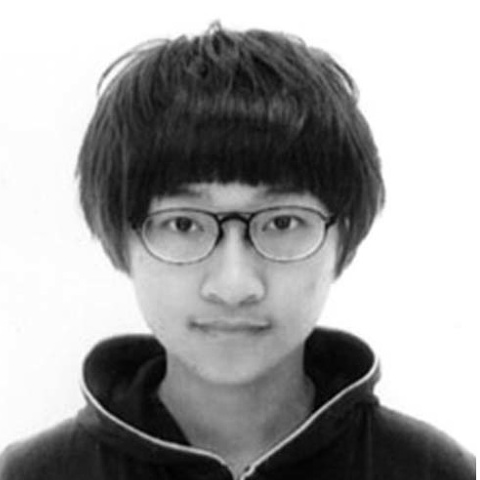
Ho Ting Wei
Taipei, Taiwan
Who's-Tone
“Who’s-Tone” is a short animation. The story is about an unusual conversation between the character and different rocks. The character believes stones are empathetic and can feel and heal her. This project aims to explore the spiritual relationship between stone and human, and from which the artist's wounded heart is healed through the experience. The work hopes to present the power of healing of Mother Nature.
Ho-Ting Wei is an animation filmmaker and multidisciplinary artist based in Taiwan. Her work attempts to attract people to embrace tough environmental or social issues by using interesting artistic ways. She holds a MFA in Animation and Film Art from Tainan National University of the Arts.
Taipei, Taiwan
Who's-Tone
“Who’s-Tone” is a short animation. The story is about an unusual conversation between the character and different rocks. The character believes stones are empathetic and can feel and heal her. This project aims to explore the spiritual relationship between stone and human, and from which the artist's wounded heart is healed through the experience. The work hopes to present the power of healing of Mother Nature.
Ho-Ting Wei is an animation filmmaker and multidisciplinary artist based in Taiwan. Her work attempts to attract people to embrace tough environmental or social issues by using interesting artistic ways. She holds a MFA in Animation and Film Art from Tainan National University of the Arts.
Chi e’ Pie(t)ra Chi è Pie(t)ra è un cortometraggio animato. È la storia di una conversazione insolita tra un personaggio femminile e diverse pietre. Il personaggio crede che le pietre siano empatiche e possano sentirla e guarirla. Questo progetto mira ad esplorare il rapporto spirituale tra l’elemento pietra e l’umano, dove il cuore ferito dell'artista guarisce attraverso l'esperienza. Il lavoro mira a presentare la potenza guaritrice di Madre Natura.
Ho-Ting Wei è filmmaker d’animazione e artista multidisciplinare; vive a Taiwan. Il suo approccio minuto con espedienti artisitici particolari intende coinvolgere le persone ad abbracciare temi ambientali o sociali. Ha ottenuto un Master of Fine Arts in Animazione e Film Art all'Università Nazionale delle Arti di Tainan.
2017 Alt. Residents
Katy Bradford / USASimon Eales, Eco-Poet & Researcher / Melbourne, Australia & Buffalo, NY, USA
Anne Elvey, Eco-Poet, Melbourne, Australia
Jennifer Jenkins, Sculptor / Hamburg, Germany
Sofia Malone, Painter / Stockholm, Sweden
Kwangwoo Kim, Installation & Performing Artist / Gyeonggi do, South Korea
Helena Wadsley, Artist / Vancouver, Canada
Sara Palmieri, Photographer / Roma, Italy
2017 Visitors
Paolo Belloni, Architect / Bergamo, ItalyEnrico Borghi, Politician, UNCEM / Vogogna, Italy
Mauro Bugada, Architect / Sant’Omobono Terme, Bg, Italy
Stefania Cabassi, Geologist / Piazza Brembana, Bg, Italy
Antonio Carminati, Centro Studi Val Imagna / Val Imagna Italy
Gloria Cornolti, Prov. Bg / Bergamo, Italy
Davide Crippa, Architect / Milano, Italy
Gianmarco Orlandi, Geologist / Ranica, Bg, Italy
Francesco Garofalo, Landscape Architect / Rotterdam, The Netherlands
Jacopo Gennari Feslikenian, Photographer / Rotterdam, The Netherlands
Anna Giorgi, Botanist, UNIMONT / Milano, Italy
Alice Guarisco, Architect / Brescia, Italy
Pietro Invernizzi, Scalpellino / Val Imagna, Italy
Maurizio Ori, Landscape Architect / Cremona, CR, Italy
Luigino Pirola, Landscape Architect / Bonate Sopra, BG, Italy
Tiziana Scaciga, Recycled Stones / Domodossola, Italy
Enrico Scaramellini, Architect / Madesimo, SO, Italy
Jennifer Scappettone, Eco-Poet / Chicago, IL, USA
Asli Suner, Architect / Istanbul, Turkey
Paolo Valoti CAI / Grassobbio, BG, Italy
Matteo Zanga, Photographer / Val Seriana, Bg, Italy



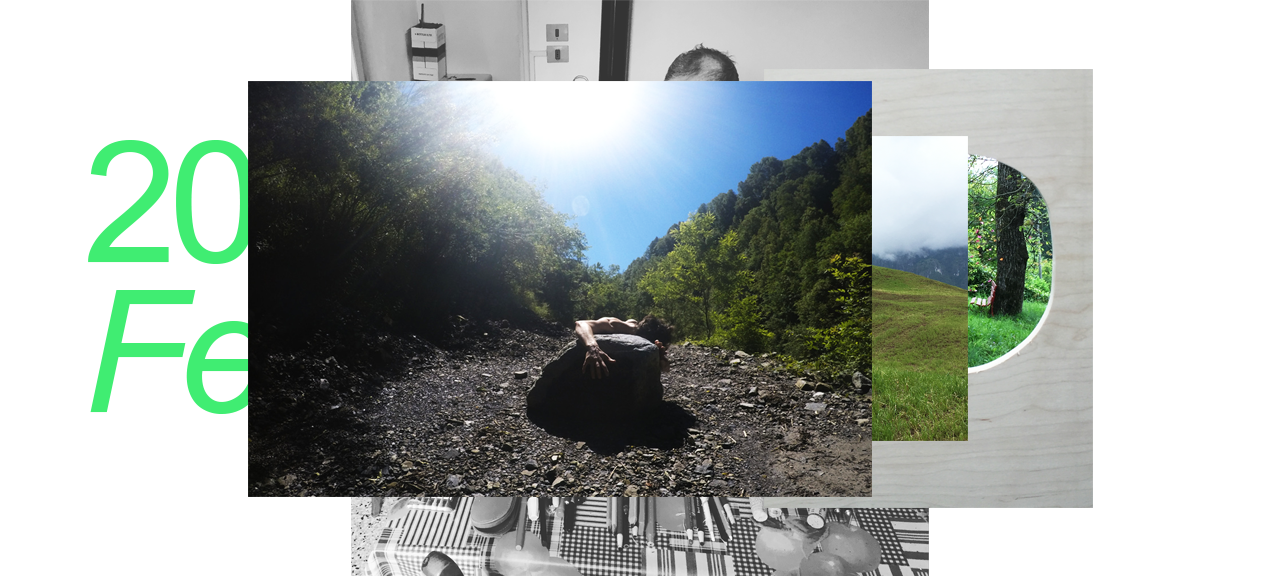






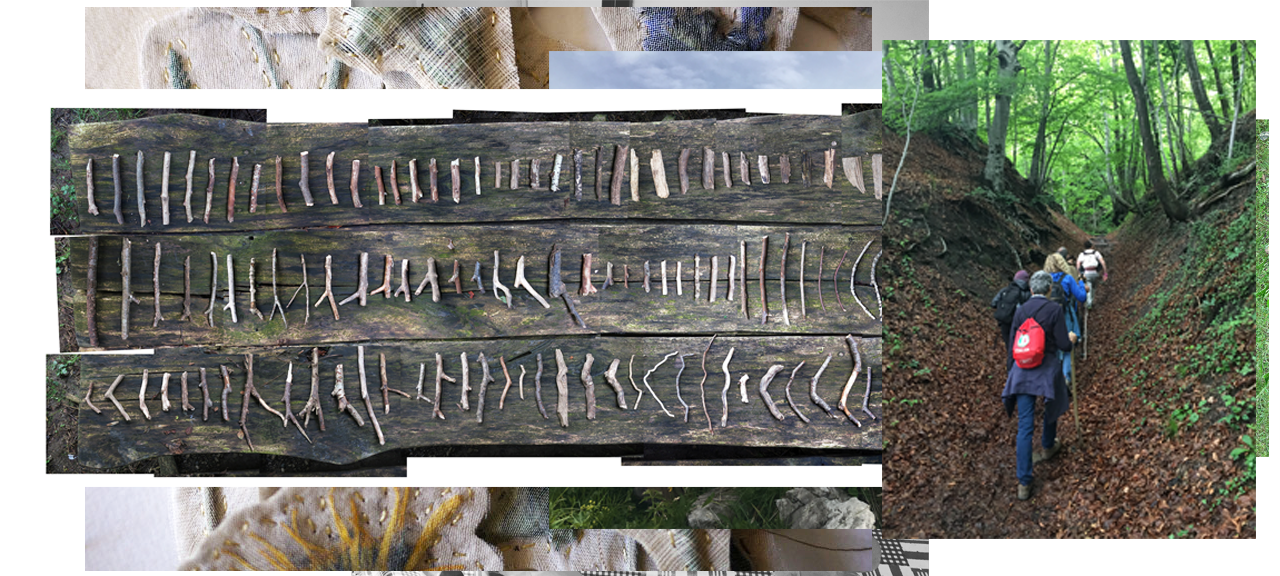
2016

Mauriah Kraker
Milwaukee, WI USA
Track / Shul
Building movement sequences in both rural and urban environments of the Taleggio Valley, Kraker's solo work focused on imprinting the land with her presence and absence.
Mariah Kraker created projects on printing presses in Germany in rivers of the Midwest, under bridges in Taiwan and in Bangkok's zombie buildings. Currently, she is an MFA Candidate at the University of Illinois at Urbana-Champaign.
Milwaukee, WI USA
Track / Shul
Building movement sequences in both rural and urban environments of the Taleggio Valley, Kraker's solo work focused on imprinting the land with her presence and absence.
Mariah Kraker created projects on printing presses in Germany in rivers of the Midwest, under bridges in Taiwan and in Bangkok's zombie buildings. Currently, she is an MFA Candidate at the University of Illinois at Urbana-Champaign.
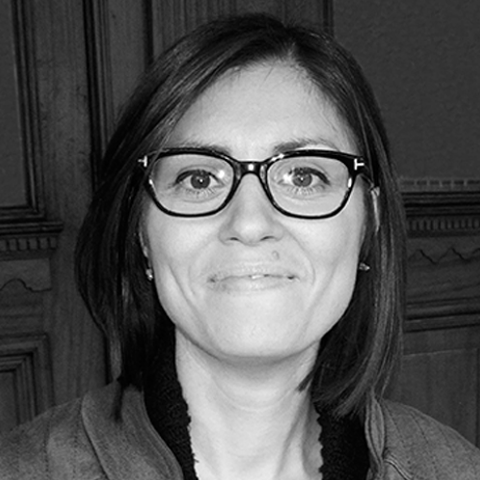
Elena Brebenel
Ploiesti, Romania
Whispers of the Forest
Whispers of the Forest, draws inspiration from the symbiotic relationships existent in the woods of Val Taleggio. The focus is on mutually beneficial relationships that lay at the core of the food functioning of the Woods, making it an example of a healthy habitat. In addition, the project also builds using the beneficial properties of local plants.
Elena Brebenel is a textile designer and researcher currently undertaking a PhD at Central Saint Martins in London. Currently, she is investigating how biomimicry can help us develop artifacts for the domestic environment that addresses indoor air pollution.
Ploiesti, Romania
Whispers of the Forest
Whispers of the Forest, draws inspiration from the symbiotic relationships existent in the woods of Val Taleggio. The focus is on mutually beneficial relationships that lay at the core of the food functioning of the Woods, making it an example of a healthy habitat. In addition, the project also builds using the beneficial properties of local plants.
Elena Brebenel is a textile designer and researcher currently undertaking a PhD at Central Saint Martins in London. Currently, she is investigating how biomimicry can help us develop artifacts for the domestic environment that addresses indoor air pollution.
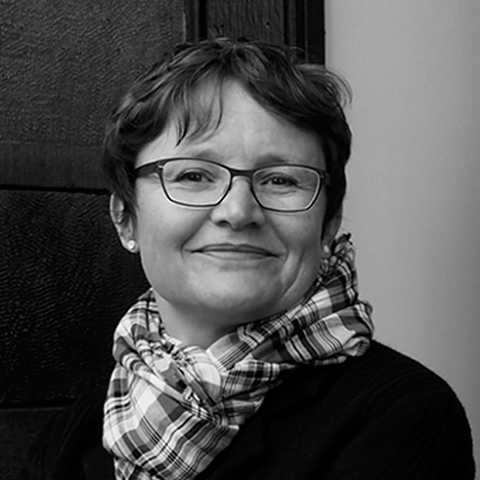
Elke Eichmann
Zürich, Switzerland
Beauty in Imperfection
Spending time in nature opens our eyes to the profound beauty of imperfection. The natural cycle of growth, decay and death shows the simple, slow and uncluttered essence of life. It is like in the Japanese concept of Wabi-sabi where simplicity, asymmetry or irregularity lead to a meditation of impermanence and transience of things.
This project is a concentrated visual research on the woods in the Val Taleggio. These trees lead a difficult existence and fight against the topography, water, erosions and weather. Through this project, Elke combined the view of the photographer and the architect in nature, while catching the specific significance of the Taleggio Valley.
Elke Eichmann is an architect and photographer, she lives and works in Zurich.
Zürich, Switzerland
Beauty in Imperfection
Spending time in nature opens our eyes to the profound beauty of imperfection. The natural cycle of growth, decay and death shows the simple, slow and uncluttered essence of life. It is like in the Japanese concept of Wabi-sabi where simplicity, asymmetry or irregularity lead to a meditation of impermanence and transience of things.
This project is a concentrated visual research on the woods in the Val Taleggio. These trees lead a difficult existence and fight against the topography, water, erosions and weather. Through this project, Elke combined the view of the photographer and the architect in nature, while catching the specific significance of the Taleggio Valley.
Elke Eichmann is an architect and photographer, she lives and works in Zurich.
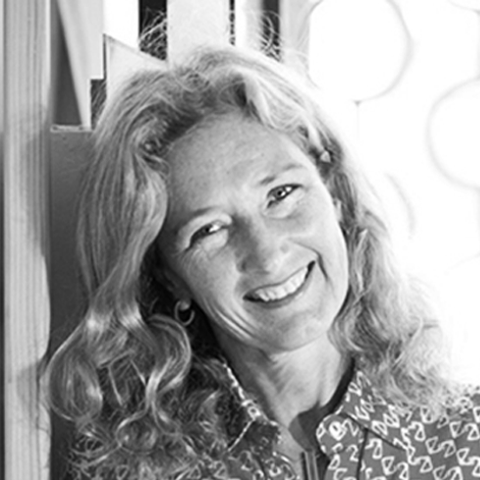
Isabelle Duvivier
Venice, CA USA
The Woods at Home from Biophobia to Biofilia
Inspired by the butterfly's relationship to nature, and by human-managed forests, the project is exploring ways of stirring humans away from Biosphobia, - fear of the outdoors particularly of spiders and snakes - towards Biofilia - attractions and connection to nature. By creating a butterfly-human friendly architecture, we will expand the woods/meadows into the cities, increase bio-diversity within and outside the city and create a well-needed appreciation of our natural resources.
Isabelle Duvivier is an American-Belgian architect, Principal of Duvivier Architects, located in Venice Beach, California. She is a fellow of the American Institute of Architects. She received her Masters degree from the University of California at Berkeley, where she also studied math and welding. She is interested in the integration of nature in the built environment.
Venice, CA USA
The Woods at Home from Biophobia to Biofilia
Inspired by the butterfly's relationship to nature, and by human-managed forests, the project is exploring ways of stirring humans away from Biosphobia, - fear of the outdoors particularly of spiders and snakes - towards Biofilia - attractions and connection to nature. By creating a butterfly-human friendly architecture, we will expand the woods/meadows into the cities, increase bio-diversity within and outside the city and create a well-needed appreciation of our natural resources.
Isabelle Duvivier is an American-Belgian architect, Principal of Duvivier Architects, located in Venice Beach, California. She is a fellow of the American Institute of Architects. She received her Masters degree from the University of California at Berkeley, where she also studied math and welding. She is interested in the integration of nature in the built environment.

Jay Yowell
Edmond, OK USA
Tree Bark as Model for Architecture
Tree bark as Model explores how the trees, specifically their bark, found in the woods of the Taleggio Valleyt can serve as inspiration from improving architectural building envelopes. Outcomes are a series of analytical drawings on the research of tree bark as well as regional architecture of the Taleggio Valley and also proposing concepts for new building envelopes. Additionally, local bark form the region will be collected and displayed.
Jay Yowell is an architect in Edmond, Oklahoma and a professor at the University of Oklahoma. He enjoys outdoor activities and this connection to nature has lead to a passion for bio-inspired design. Recent research has been on applying bio-inspiration to building skins.
Edmond, OK USA
Tree Bark as Model for Architecture
Tree bark as Model explores how the trees, specifically their bark, found in the woods of the Taleggio Valleyt can serve as inspiration from improving architectural building envelopes. Outcomes are a series of analytical drawings on the research of tree bark as well as regional architecture of the Taleggio Valley and also proposing concepts for new building envelopes. Additionally, local bark form the region will be collected and displayed.
Jay Yowell is an architect in Edmond, Oklahoma and a professor at the University of Oklahoma. He enjoys outdoor activities and this connection to nature has lead to a passion for bio-inspired design. Recent research has been on applying bio-inspiration to building skins.

Jenny Rodenhouse
Los Angeles, CA USA
The Enchanted Forests: Satellite Canopies and Digital Understories
By 2019, remote laser scanning technology (LiDAR) will be installed on the International Space Station. As it orbits the earth, it will collect forest carbon data for each site it passes. Using woodlands located in Sottochiesa Italy, LiDAR mapping, and iPhone ISS locator applications, the project simulates a digital forest that appears and disappears with the passing of the International Space Station.
With each fly over, the forest becomes a more and more dense collection of past, current, and future trees. Evolving into a digital data bank, the video imagines the forest as an interface for international climate policies and carbon trading economies. The project investigates how our natural landscapes, seasons, and rituals may be transformed by new observational technologies and artificial celestial forces.
Jenny Rodenhouse is a multimedia designer and artist, whose work examines the merging of the interfaces and the landscape. Appropriating the test site, places of experimentation, she explores the implications of emerging technology, creating hybrid virtual/physical, artificial/natural, local/global environments.
Los Angeles, CA USA
The Enchanted Forests: Satellite Canopies and Digital Understories
By 2019, remote laser scanning technology (LiDAR) will be installed on the International Space Station. As it orbits the earth, it will collect forest carbon data for each site it passes. Using woodlands located in Sottochiesa Italy, LiDAR mapping, and iPhone ISS locator applications, the project simulates a digital forest that appears and disappears with the passing of the International Space Station.
With each fly over, the forest becomes a more and more dense collection of past, current, and future trees. Evolving into a digital data bank, the video imagines the forest as an interface for international climate policies and carbon trading economies. The project investigates how our natural landscapes, seasons, and rituals may be transformed by new observational technologies and artificial celestial forces.
Jenny Rodenhouse is a multimedia designer and artist, whose work examines the merging of the interfaces and the landscape. Appropriating the test site, places of experimentation, she explores the implications of emerging technology, creating hybrid virtual/physical, artificial/natural, local/global environments.
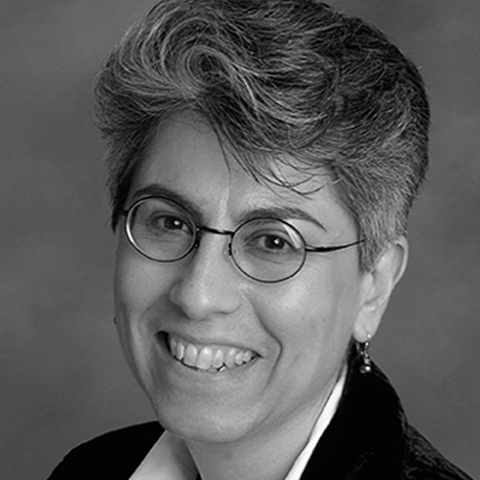
Sabina Magliocco
Northridge, CA USA
Nature and the Spiritual Imagination: The woods in the culture of Val Taleggio
The project examines the relationship between spiritual and ontological concepts of nature and sustainable practices by comparing traditional ways of relating to the woods of the Val Taleggio to the "new animism", a form of environmentalism that uses imaginative praxes to create relationships with nature.
Sabina Magliolo is a Professor of Anthropology at California State University, Northridge. She has published on religion, folklore, foodways, festival and witchcraft in Europe and the United States, and is a leading authority on the modern Pagan movement. He current research is on nature and spiritual imagination.
Northridge, CA USA
Nature and the Spiritual Imagination: The woods in the culture of Val Taleggio
The project examines the relationship between spiritual and ontological concepts of nature and sustainable practices by comparing traditional ways of relating to the woods of the Val Taleggio to the "new animism", a form of environmentalism that uses imaginative praxes to create relationships with nature.
Sabina Magliolo is a Professor of Anthropology at California State University, Northridge. She has published on religion, folklore, foodways, festival and witchcraft in Europe and the United States, and is a leading authority on the modern Pagan movement. He current research is on nature and spiritual imagination.
2016 Alt. Residents
Paul Alexander, Musician / Vancouver, BC, CanadaDan Disney, Poet / Seoul, South Korea
Caroline Clerc Artist / Los Angeles, CA, USA
Viviana Gonzalez, Visual Artist / Bogota, Colombia
Jennifer Scappettone, Eco-Poet / Chicago, IL, USA
Naya Magaliou Soulein, Artist / Athens, Greece
2016 Visitors
Lola Dompe’, Microbiologist / Los Angeles, CA, USATalulah Brown, Creative writing student / New York, NY, USA
Nancy Frelick, French Literature / Vancouver, BC, Canada
Alice Guarisco, Architect / Brescia, Italy
Sun-Ha Lee, Yogi / Seoul, South Korea
Isabel Martin, Cellist / Hagen, Germany
Asli Suner, Architect / Istanbul, Turkey
Adrian Wong, SCI-Arc Student / Hong Kong, China
Sermin Kardestuncer, Artist / New York, NY, USA
2016 Lecturers
Giancarlo Aresi, Wood Engineer / Treviglio, BG, ItalyPierino Bigoni, Micologo / Villa d’Ogna, BG, Italy
Giuseppe Locatelli, Mountain Guide / Val Taleggio, BG, Italy
Flavio Galizzi, Hunter / San Pellegrino Terme, BG, Italy
Patrizio Musitelli, Agronomist / Val Brembilla, BG, Italy
Nella Poggi, Paper Restoration / Bergamo, Italy
Stefano Torriani, Naturalist / San Pellegrino Terme, Bg, Italy






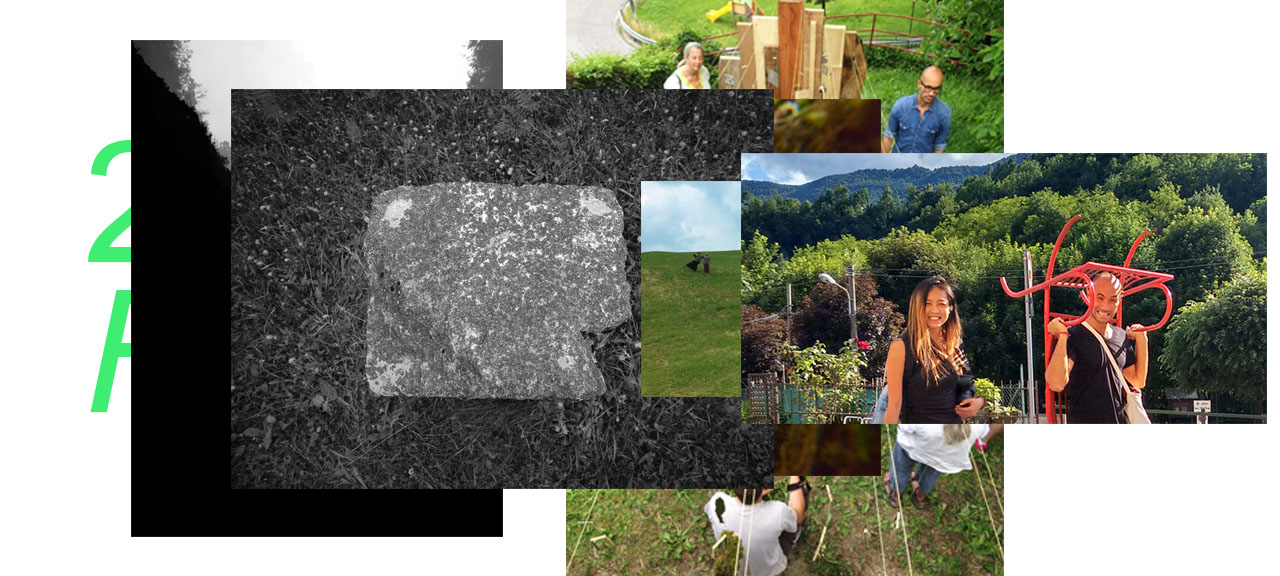


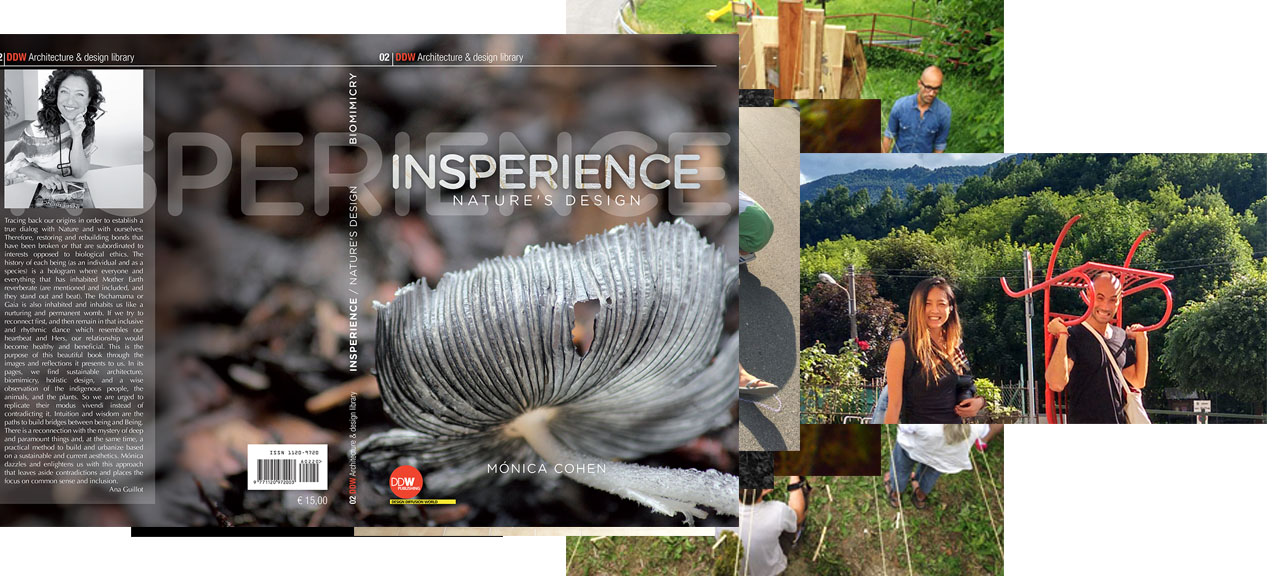


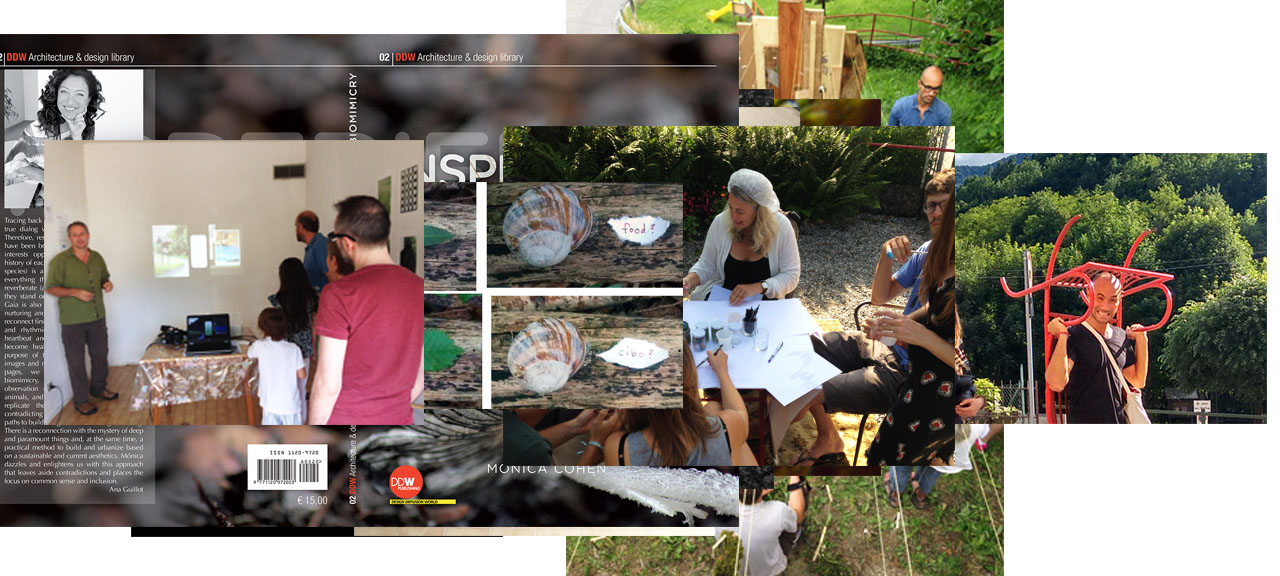
2015

Eugenia Bertulis
Canada
Posthuman-Centered Design
The design research project carried out at the NAHR residency is a response to the philosophical provocation that non-humans might have forms of agency. Human-centered design methods dominate industrial design practice today. How would a shift in epistemology from human-centered to more-than-human-centered design influence these research methods? What might it mean to ask a honeybee to give informed consent? What does a co-creative activity with a goat or a snail look like? How would one engage cheese culture in an ethnographic probe?
Eugenia Bertulis is an award-winning industrial designer teaching medical equipment design and digital part design at Emily Carr University in Vancouver, BC, Canada. She is also doing PhD research at Simon Fraser University on plastic and plasticity as a philosophical model for ethical product design.
Canada
Posthuman-Centered Design
The design research project carried out at the NAHR residency is a response to the philosophical provocation that non-humans might have forms of agency. Human-centered design methods dominate industrial design practice today. How would a shift in epistemology from human-centered to more-than-human-centered design influence these research methods? What might it mean to ask a honeybee to give informed consent? What does a co-creative activity with a goat or a snail look like? How would one engage cheese culture in an ethnographic probe?
Eugenia Bertulis is an award-winning industrial designer teaching medical equipment design and digital part design at Emily Carr University in Vancouver, BC, Canada. She is also doing PhD research at Simon Fraser University on plastic and plasticity as a philosophical model for ethical product design.
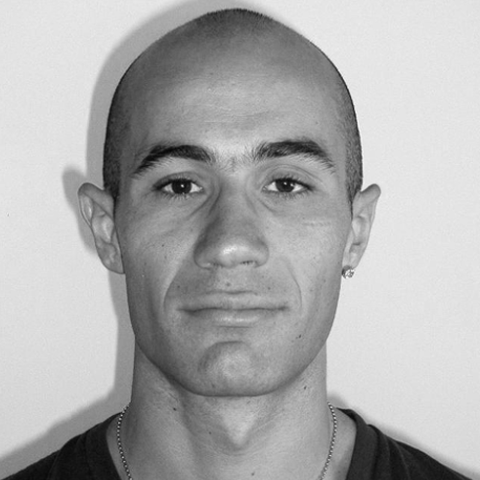
Mauro Sacchi
[in collaboration with Yule Lin]
Italy
Were Here
Were Here is a multidisciplinary project, an exploration of the habitat of Sottochiesa, Taleggio, through live performance, video art, photography, and street art. WE make visible the presence/absence of the body - be it human, animal, alive or inanimate - in the natural and built environment, and its effects therein transforming the outer space it is in (or not), however ephemerally, it stimulates an inner impression, a thought, a feeling upon there viewer. Here lies the possibility for communication, stimulating an inner impression, a thought, a feeling upon the viewer. Here lies the possibility for communication.
Mauro Sacchi is an Italian performer and artist based in Taiwan. Together with Yule Lin, a Taiwanese performer, choreographer and video artist, they are WE Theater (a Company that Makes Stuff).
[in collaboration with Yule Lin]
Italy
Were Here
Were Here is a multidisciplinary project, an exploration of the habitat of Sottochiesa, Taleggio, through live performance, video art, photography, and street art. WE make visible the presence/absence of the body - be it human, animal, alive or inanimate - in the natural and built environment, and its effects therein transforming the outer space it is in (or not), however ephemerally, it stimulates an inner impression, a thought, a feeling upon there viewer. Here lies the possibility for communication, stimulating an inner impression, a thought, a feeling upon the viewer. Here lies the possibility for communication.
Mauro Sacchi is an Italian performer and artist based in Taiwan. Together with Yule Lin, a Taiwanese performer, choreographer and video artist, they are WE Theater (a Company that Makes Stuff).

Yule Lin
[in collaboration with Mauro Sacchi]
Taiwan
Were Here
Were Here is a multidisciplinary project, an exploration of the habitat of Sottochiesa, Taleggio, through live performance, video art, photography, and street art. WE make visible the presence/absence of the body - be it human, animal, alive or inanimate - in the natural and built environment, and its effects therein transforming the outer space it is in (or not), however ephemerally, it stimulates an inner impression, a thought, a feeling upon there viewer. Here lies the possibility for communication, stimulating an inner impression, a thought, a feeling upon the viewer. Here lies the possibility for communication.
YuHe (Bonnie) Lin is a Taiwanese performer, choreographer and video artist. Together with Mauro Sacchi, an Italian performer and artist, they are WE Theater (a Company that Makes Stuff).
[in collaboration with Mauro Sacchi]
Taiwan
Were Here
Were Here is a multidisciplinary project, an exploration of the habitat of Sottochiesa, Taleggio, through live performance, video art, photography, and street art. WE make visible the presence/absence of the body - be it human, animal, alive or inanimate - in the natural and built environment, and its effects therein transforming the outer space it is in (or not), however ephemerally, it stimulates an inner impression, a thought, a feeling upon there viewer. Here lies the possibility for communication, stimulating an inner impression, a thought, a feeling upon the viewer. Here lies the possibility for communication.
YuHe (Bonnie) Lin is a Taiwanese performer, choreographer and video artist. Together with Mauro Sacchi, an Italian performer and artist, they are WE Theater (a Company that Makes Stuff).

Monica Cohen
Argentina
INSPERIENCE, The labyrinth of the senses through emotions
INSPERIENCE is an experience of self-transformation. This biophilic experiential project intends to change the harmful impact on our shared environment through an experience of senses. It takes place in virtual spaces that invite locals and tourists to increase their awareness on the pre-existent system of communication between human beings and nature. INSPERIENCE proposes an emulation of the system of communication between plants, fungi and insects that belong to the natural ecosystem of the Orobie Alps.
Monica Cohen is an Architect and Certified Biomimicry Specialist. Born in Argentina and founder of "Biomimicry Argentina Network," she works with organizations on special projects to create a new approach with innovations inspired by nature.
Argentina
INSPERIENCE, The labyrinth of the senses through emotions
INSPERIENCE is an experience of self-transformation. This biophilic experiential project intends to change the harmful impact on our shared environment through an experience of senses. It takes place in virtual spaces that invite locals and tourists to increase their awareness on the pre-existent system of communication between human beings and nature. INSPERIENCE proposes an emulation of the system of communication between plants, fungi and insects that belong to the natural ecosystem of the Orobie Alps.
Monica Cohen is an Architect and Certified Biomimicry Specialist. Born in Argentina and founder of "Biomimicry Argentina Network," she works with organizations on special projects to create a new approach with innovations inspired by nature.

Christopher Norman
United States
1760, a porous wall in Val Taleggio
The Spanish Dukedom of Milan and the Republic of Venice divided the Taleggio Valley and marked the agreement with a series of steal known as Termenu. Today, the Termini are beautiful sculptural pieces worth visiting and understanding. The project present the experiences of getting to know the Termini through maps and photographs.
Christopher Norman graduated at the Southern California Institute of Architecture in Los Angeles, California, and is practicing residential architecture in Los Angeles.
United States
1760, a porous wall in Val Taleggio
The Spanish Dukedom of Milan and the Republic of Venice divided the Taleggio Valley and marked the agreement with a series of steal known as Termenu. Today, the Termini are beautiful sculptural pieces worth visiting and understanding. The project present the experiences of getting to know the Termini through maps and photographs.
Christopher Norman graduated at the Southern California Institute of Architecture in Los Angeles, California, and is practicing residential architecture in Los Angeles.

Idil Kemaloglu
Turkey & France
Kronos - "Mountain Moruk"
Mountain Moruk, Project Kronos born from the idea of creating a cabinet of curiosities is a form of an open air museum at Taleggio Valley, to piedmont of alpines where Sottochiesa is located. Design of the installation inspired by geomorphological formation of the alpines. Mountain moruk brings together natural elements of Taleggio Valley by creating a path and by layering the elements towards their attitudes.
Idil Kemalogio graduated in architecture from the Politecnico of Milano, she is currently a Master of Architecture student at Ecole National Superieure d'Architecture de Lyon (E.N.S.A.L), France.
Turkey & France
Kronos - "Mountain Moruk"
Mountain Moruk, Project Kronos born from the idea of creating a cabinet of curiosities is a form of an open air museum at Taleggio Valley, to piedmont of alpines where Sottochiesa is located. Design of the installation inspired by geomorphological formation of the alpines. Mountain moruk brings together natural elements of Taleggio Valley by creating a path and by layering the elements towards their attitudes.
Idil Kemalogio graduated in architecture from the Politecnico of Milano, she is currently a Master of Architecture student at Ecole National Superieure d'Architecture de Lyon (E.N.S.A.L), France.

Myck Dalrymple
United States
Visions of a Circular Economy through the Lens of Taleggio Valley
In order to avoid running out of resources on a finite planet, our economy must transition to one in wherein resources are recycled infinitely. The world can learn more about how to accomplish this by studying local, sustainable agricultural communities such as in the Taleggio Valley, where residents have been producing unique local cheeses for tens of generations with the same land, rain and sunshine.
Mack Dalrymple serves as the Director of University Sustainability Practices and a Senior Sustainability Scientist at Arizona State University, United States.
United States
Visions of a Circular Economy through the Lens of Taleggio Valley
In order to avoid running out of resources on a finite planet, our economy must transition to one in wherein resources are recycled infinitely. The world can learn more about how to accomplish this by studying local, sustainable agricultural communities such as in the Taleggio Valley, where residents have been producing unique local cheeses for tens of generations with the same land, rain and sunshine.
Mack Dalrymple serves as the Director of University Sustainability Practices and a Senior Sustainability Scientist at Arizona State University, United States.
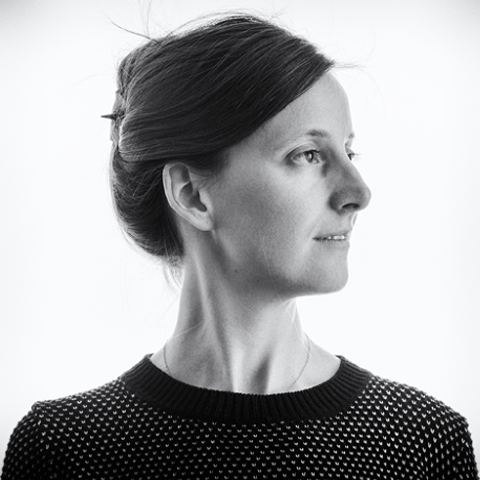
Robin Nanney
United States
Mirror Box
The Mirror Box project is a means of exploring an abstract relationship between the ground and imaginary space. The landscape in Val Taleggio is not a passive character and it engulfs a series of project models comprised largely of mirrors. The result is a mixed-up large space hiding within the earth.
Robin Nanney is a designer currently living and working in Los Angeles. Although she carries a BFA in sculpture from RISD and work experience on large-scale projects form Gehry Partners, Robin's primary work is as a residential designer grounded in craft, with a passion for material authenticity.
United States
Mirror Box
The Mirror Box project is a means of exploring an abstract relationship between the ground and imaginary space. The landscape in Val Taleggio is not a passive character and it engulfs a series of project models comprised largely of mirrors. The result is a mixed-up large space hiding within the earth.
Robin Nanney is a designer currently living and working in Los Angeles. Although she carries a BFA in sculpture from RISD and work experience on large-scale projects form Gehry Partners, Robin's primary work is as a residential designer grounded in craft, with a passion for material authenticity.
2015 Alt Res
Lisa-Rike Birkholz, Visual Artist / Berlin, GermanyChandrakala Jain, Artist / New Delhi, India
Rosie Montford, Painter / London, UK
Angela Valeria, Artist / New York, NY, USA
2015 Visitors
KyungMi Shin, Artist / Los Angeles, CA, USA Todd Gray, Artist / Los Angeles, CA, USA
